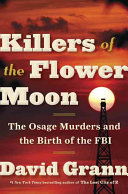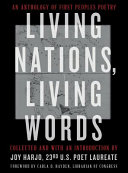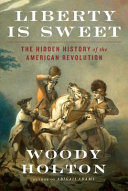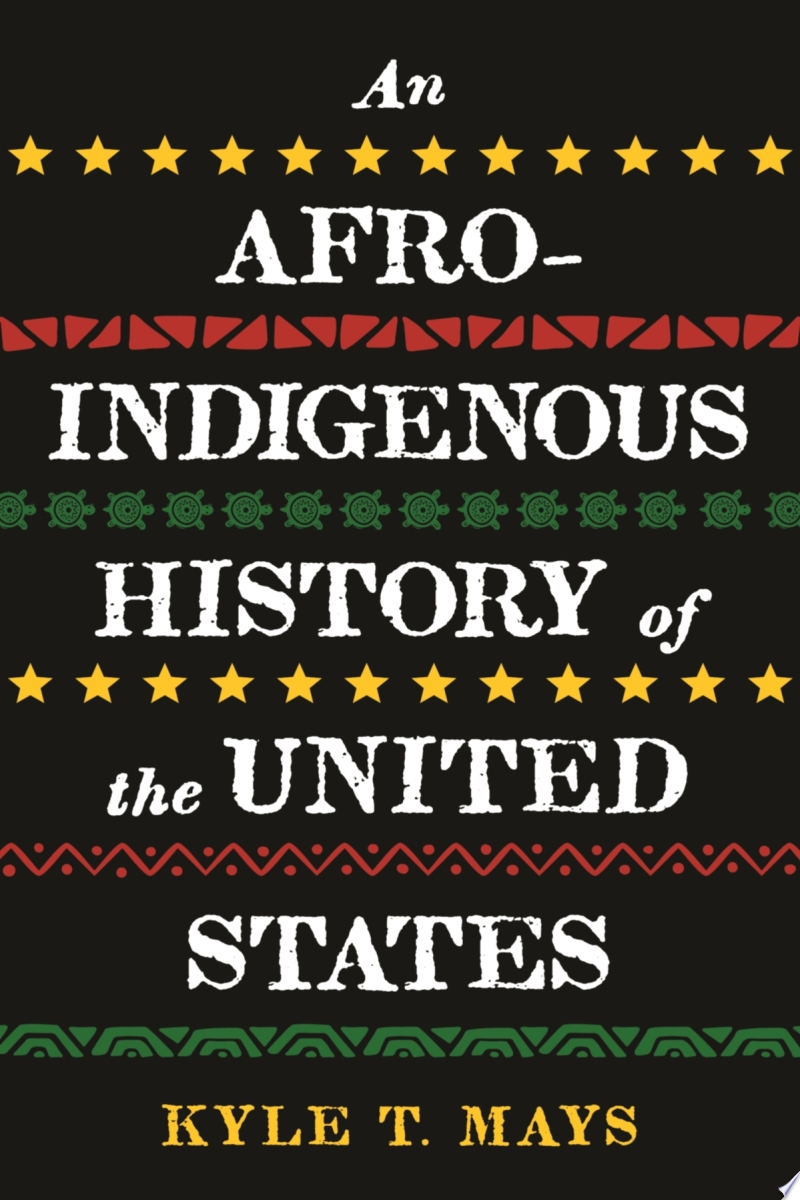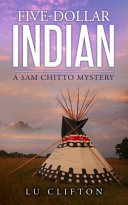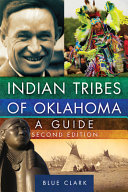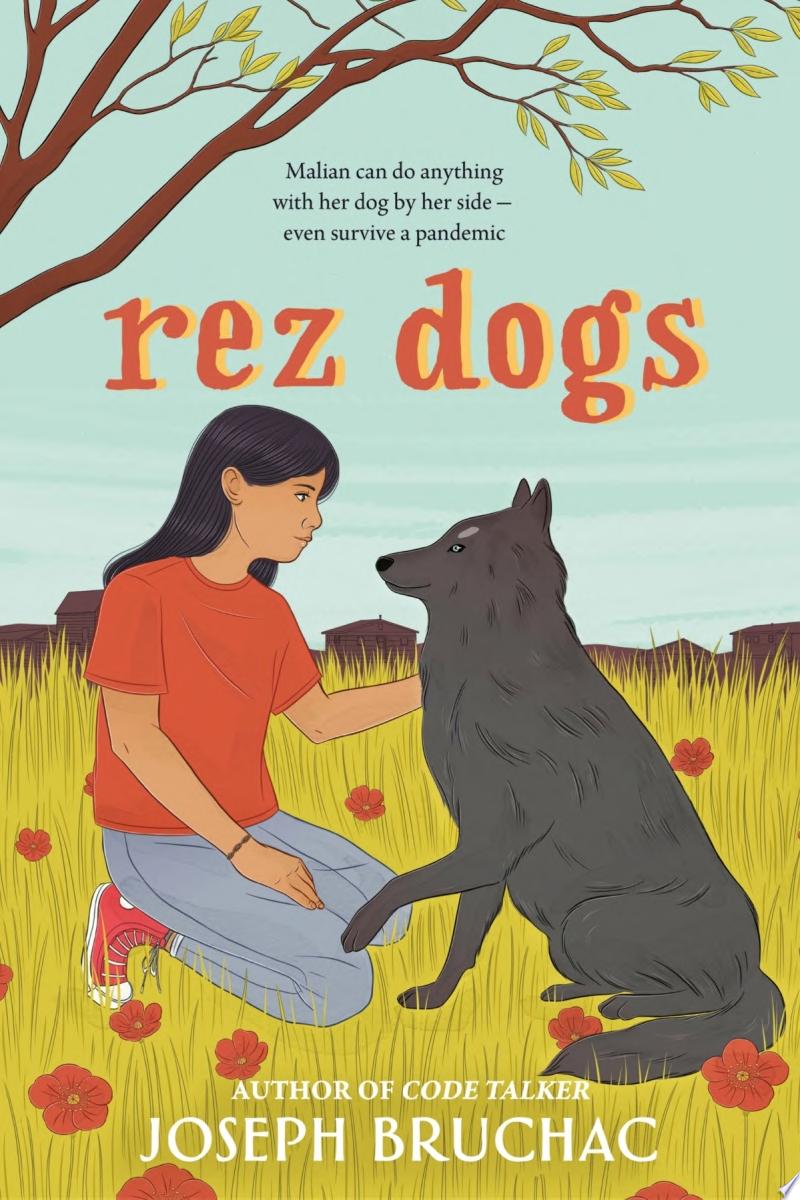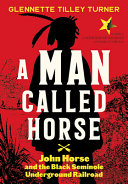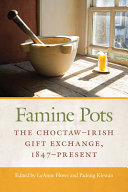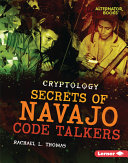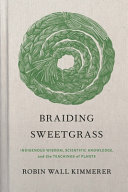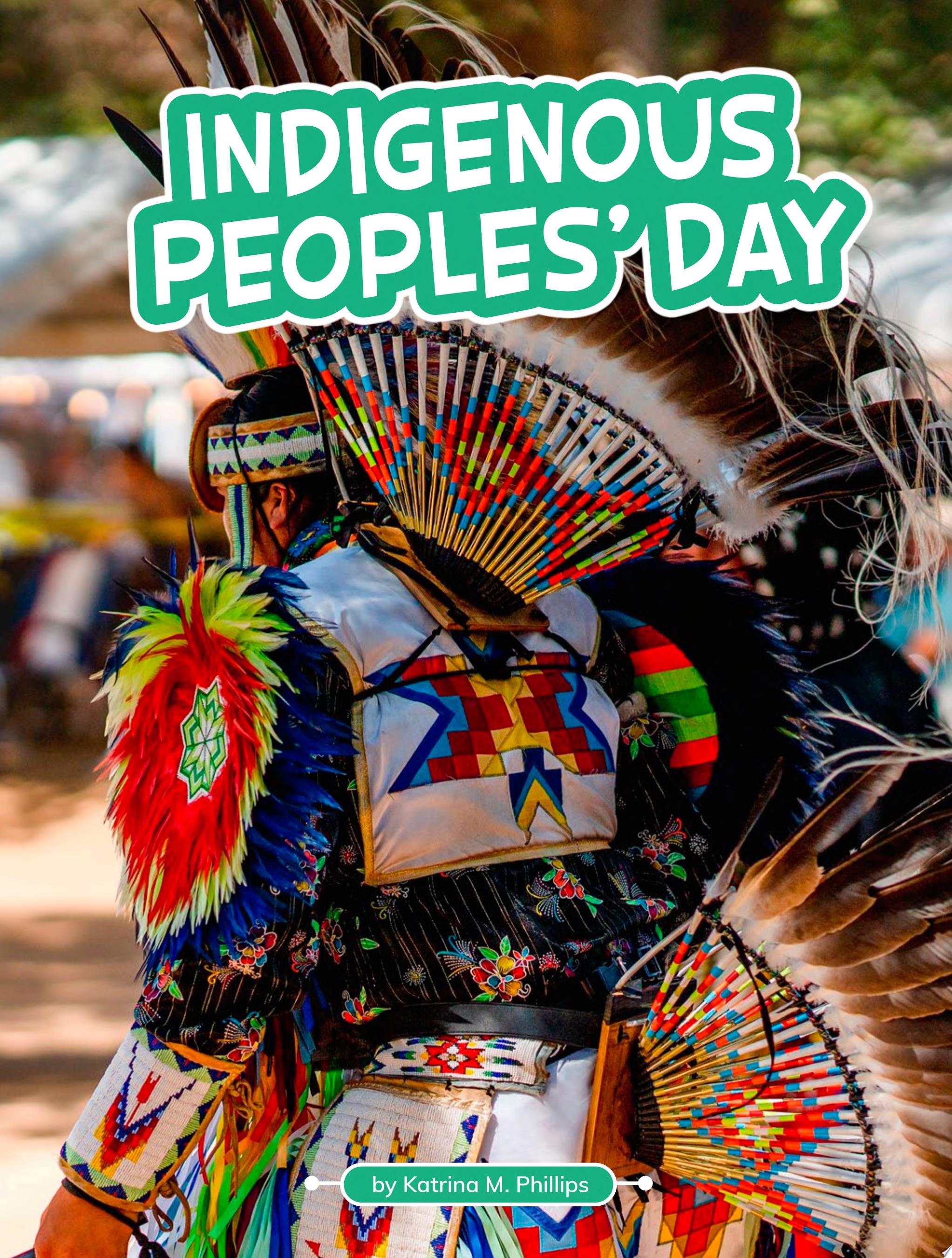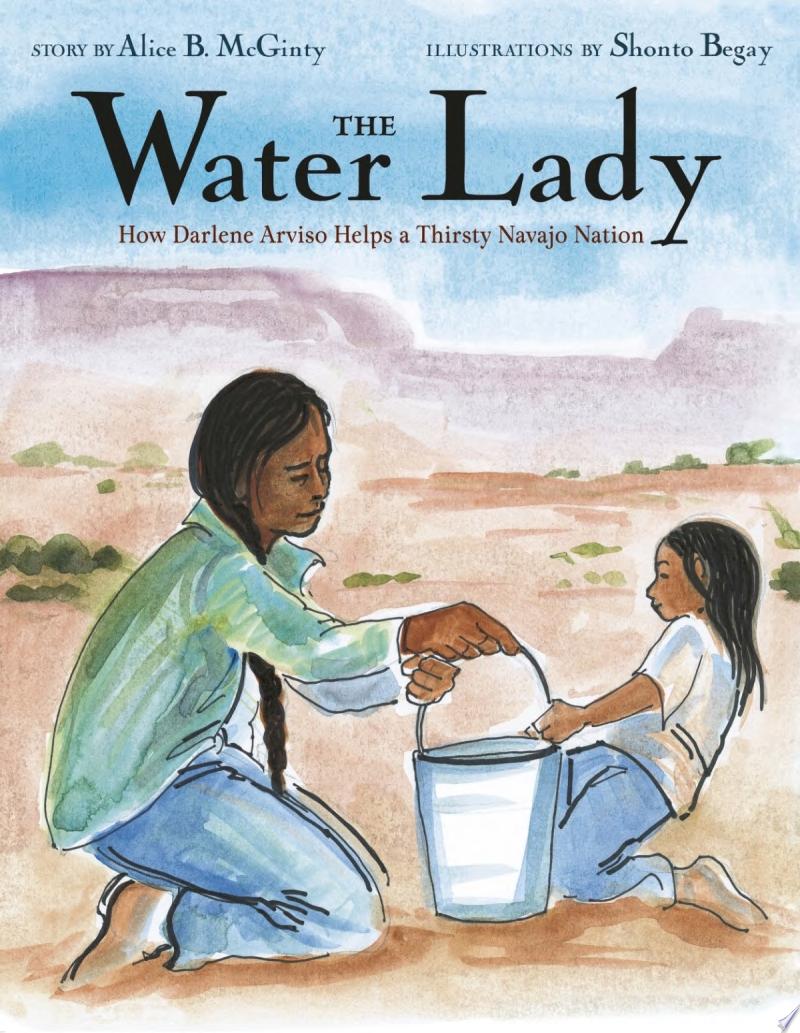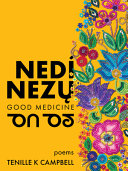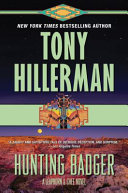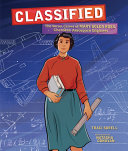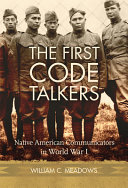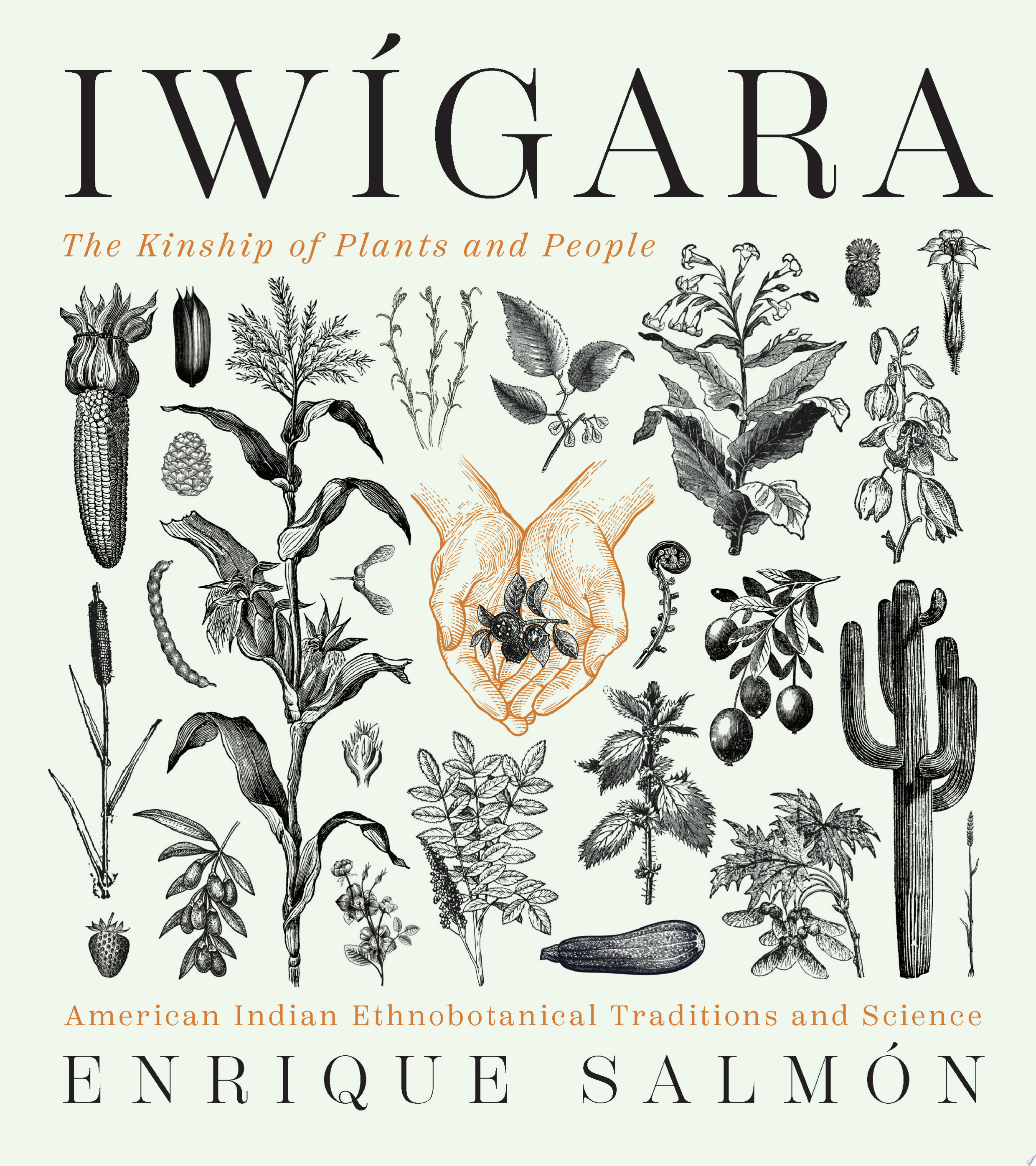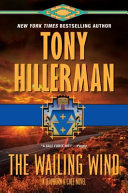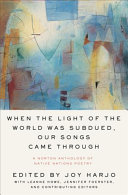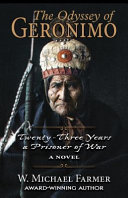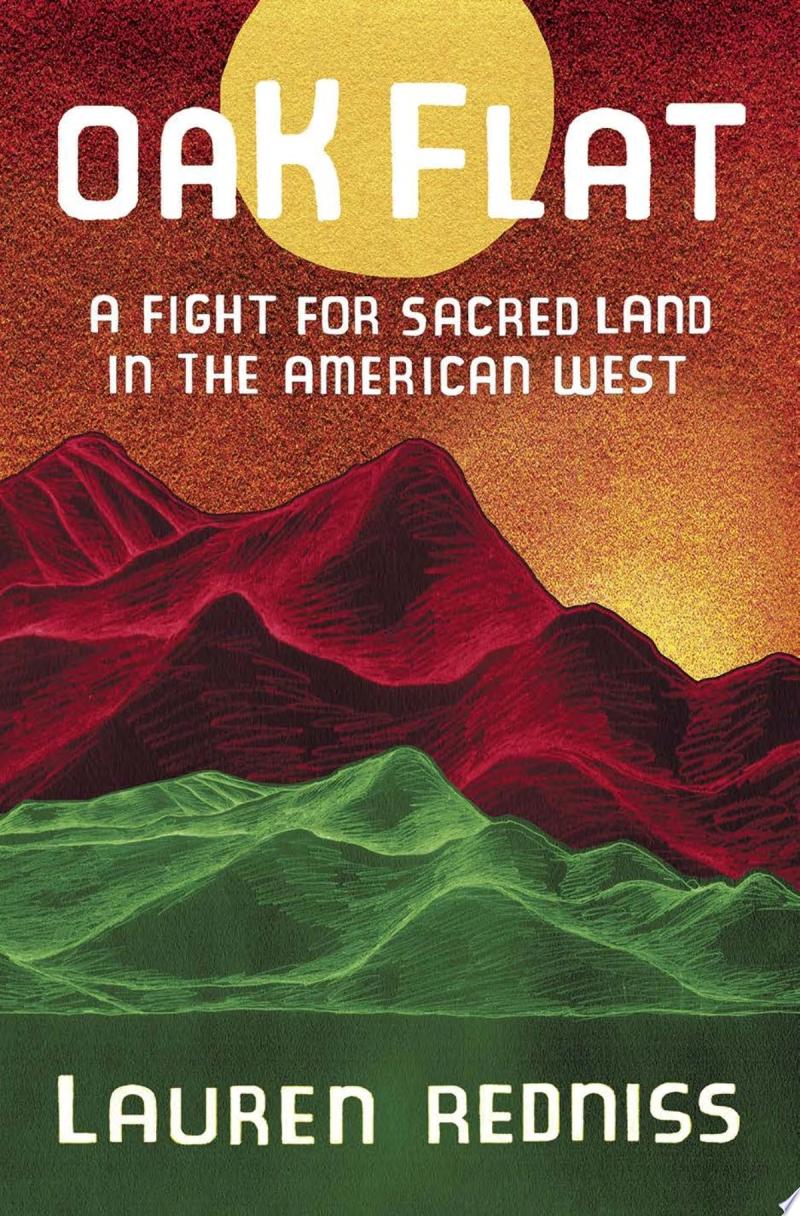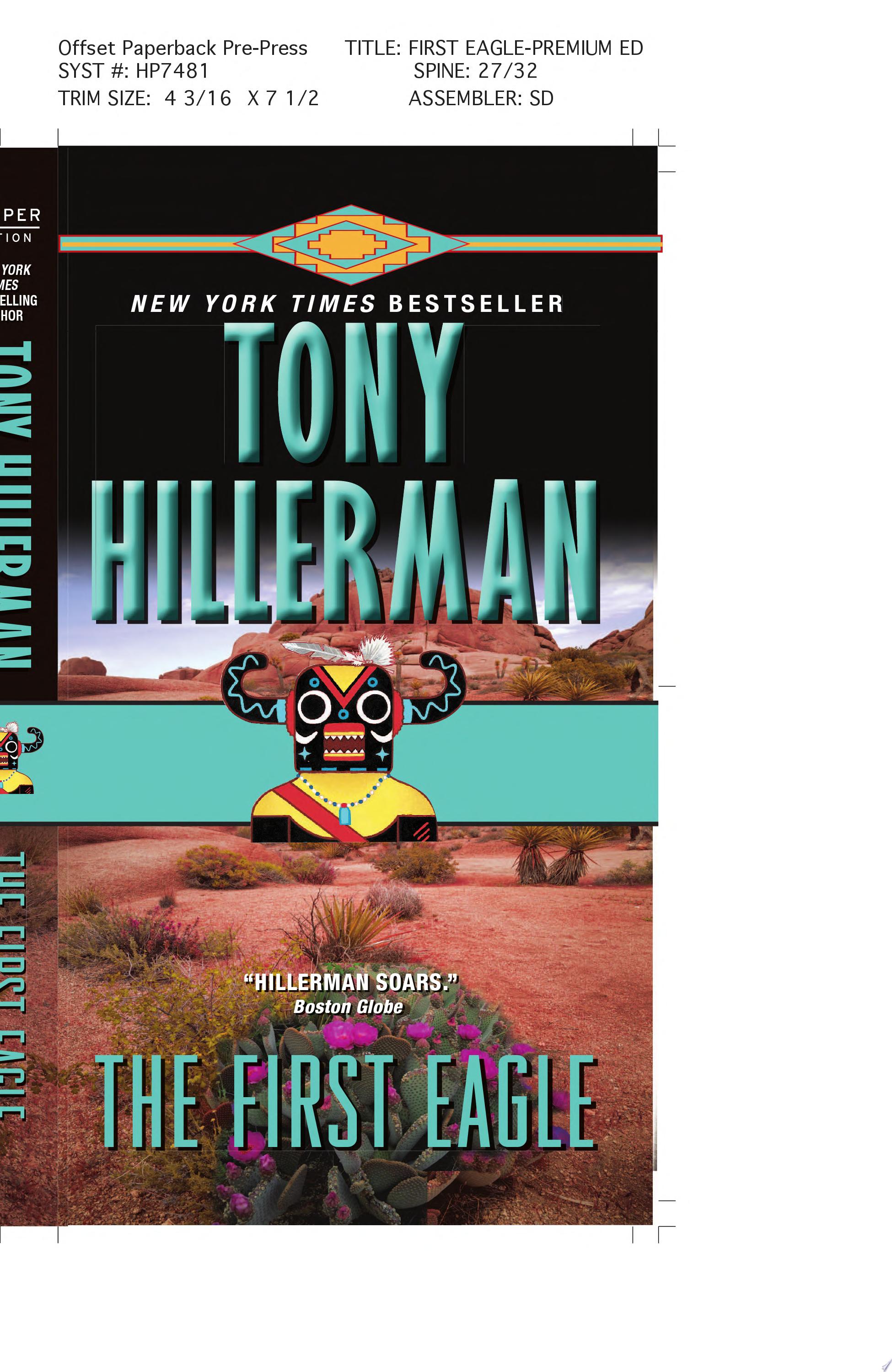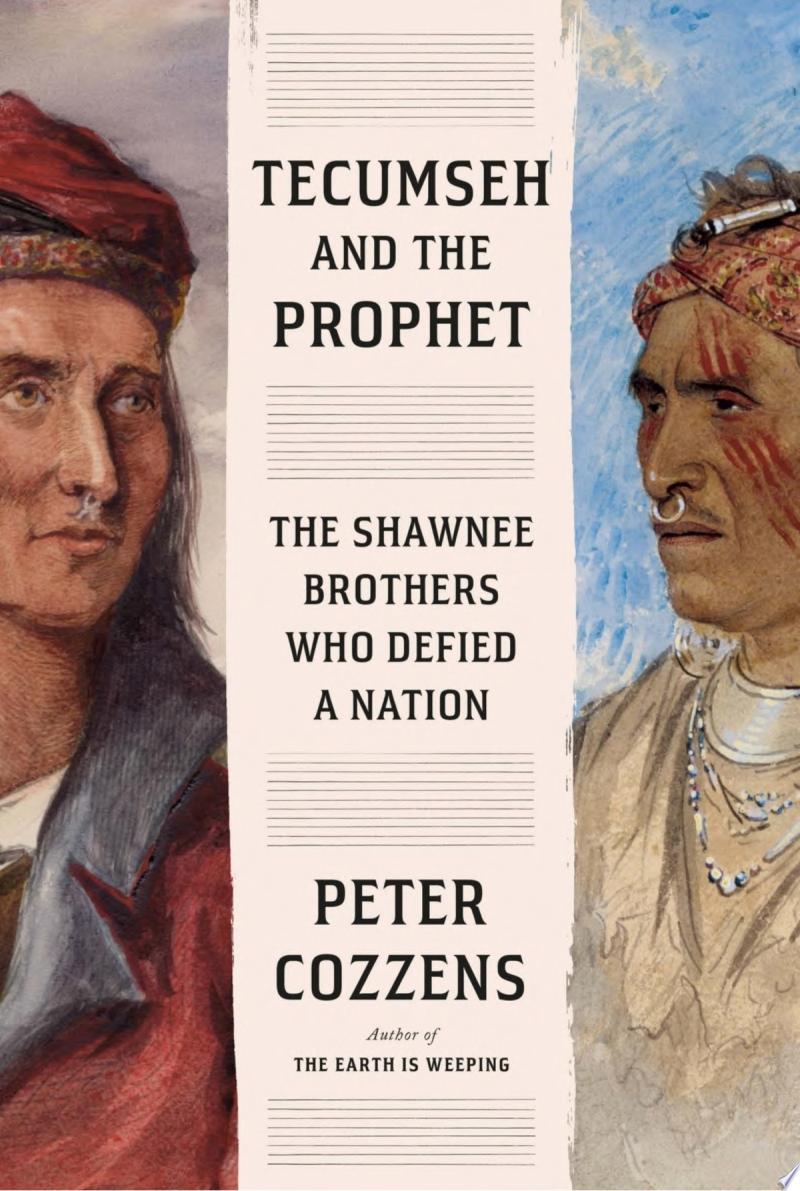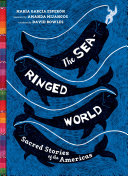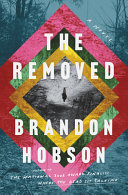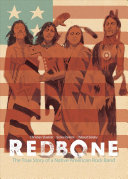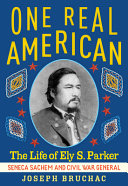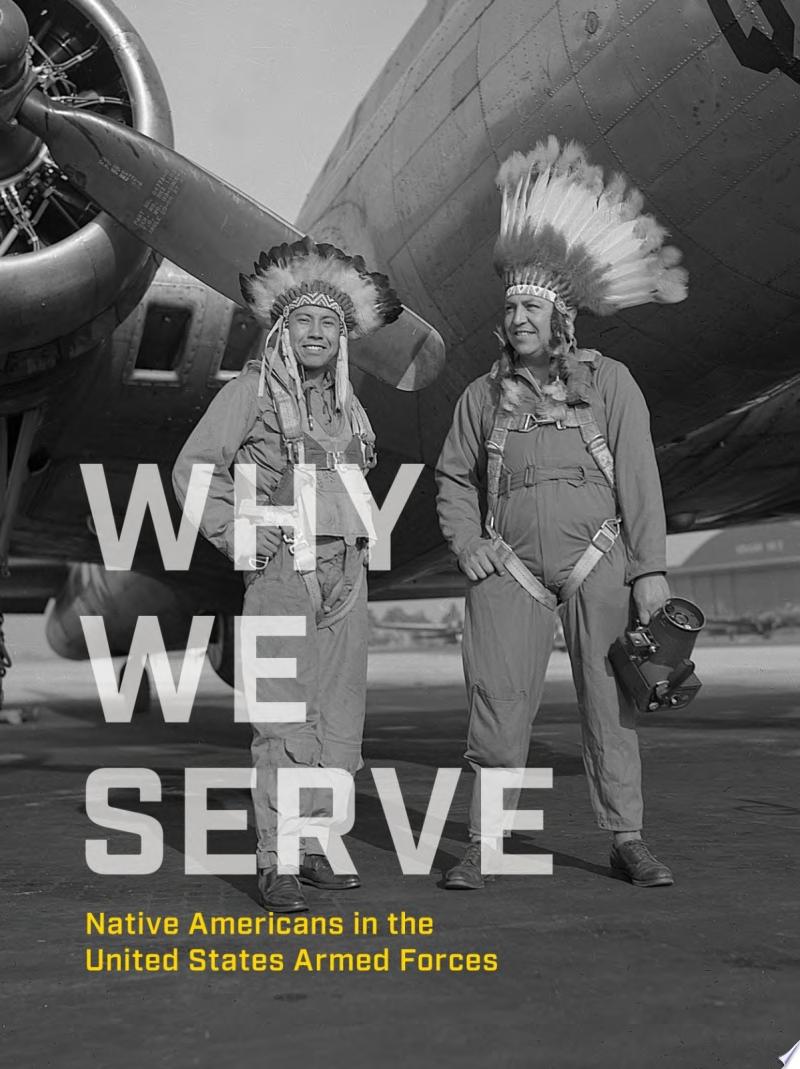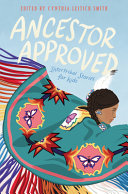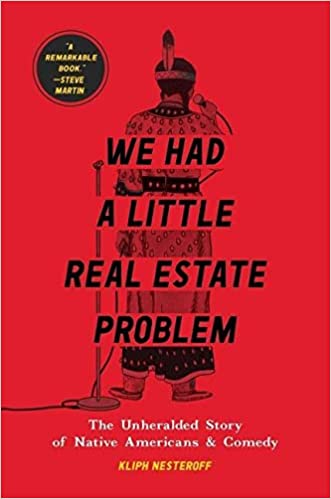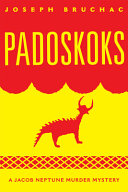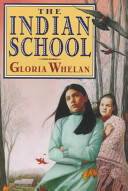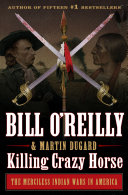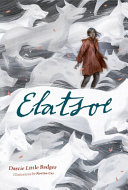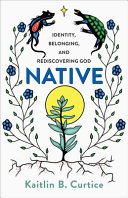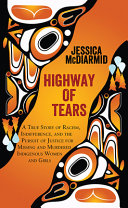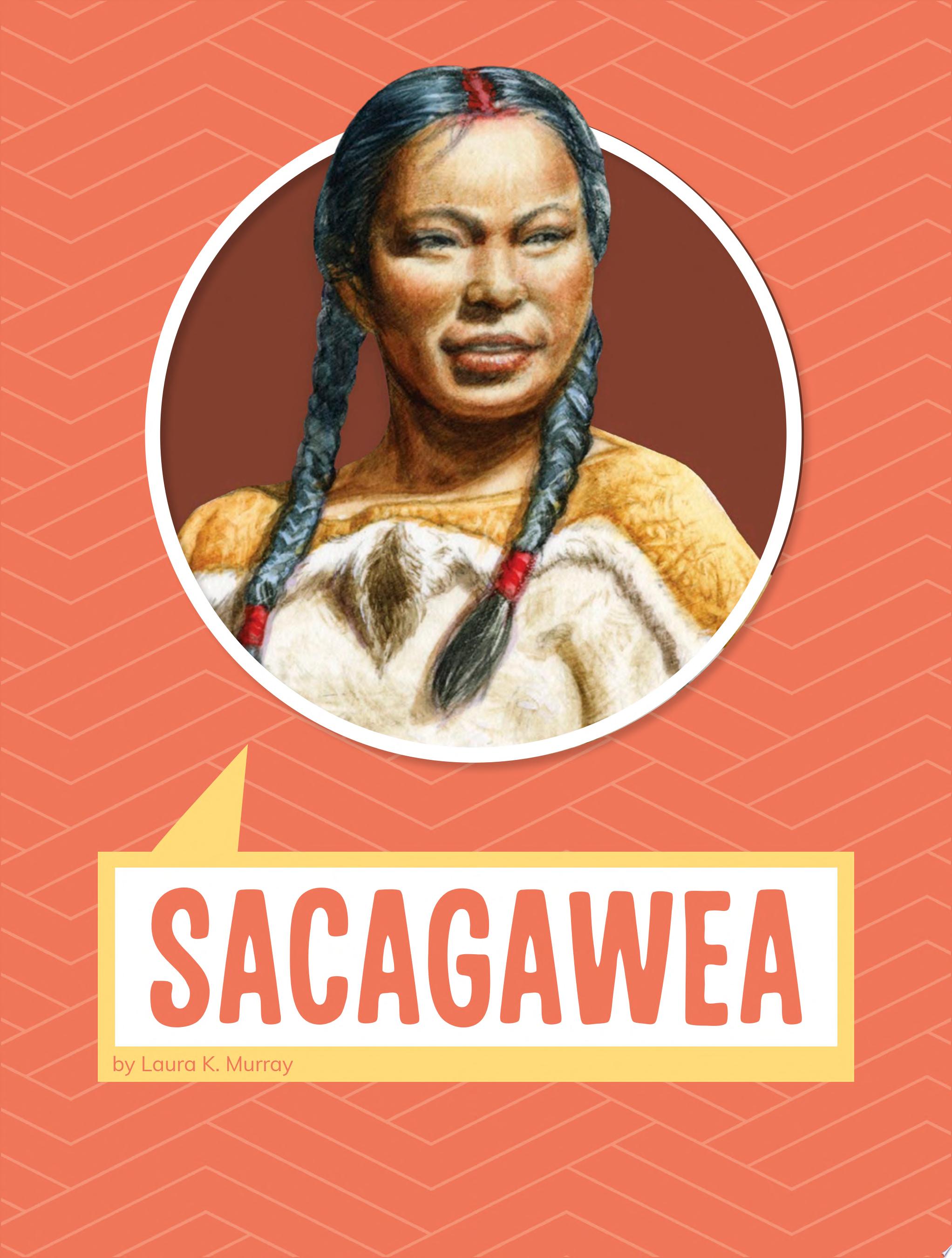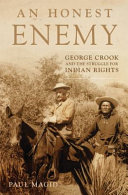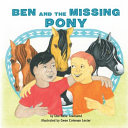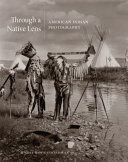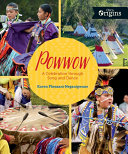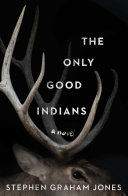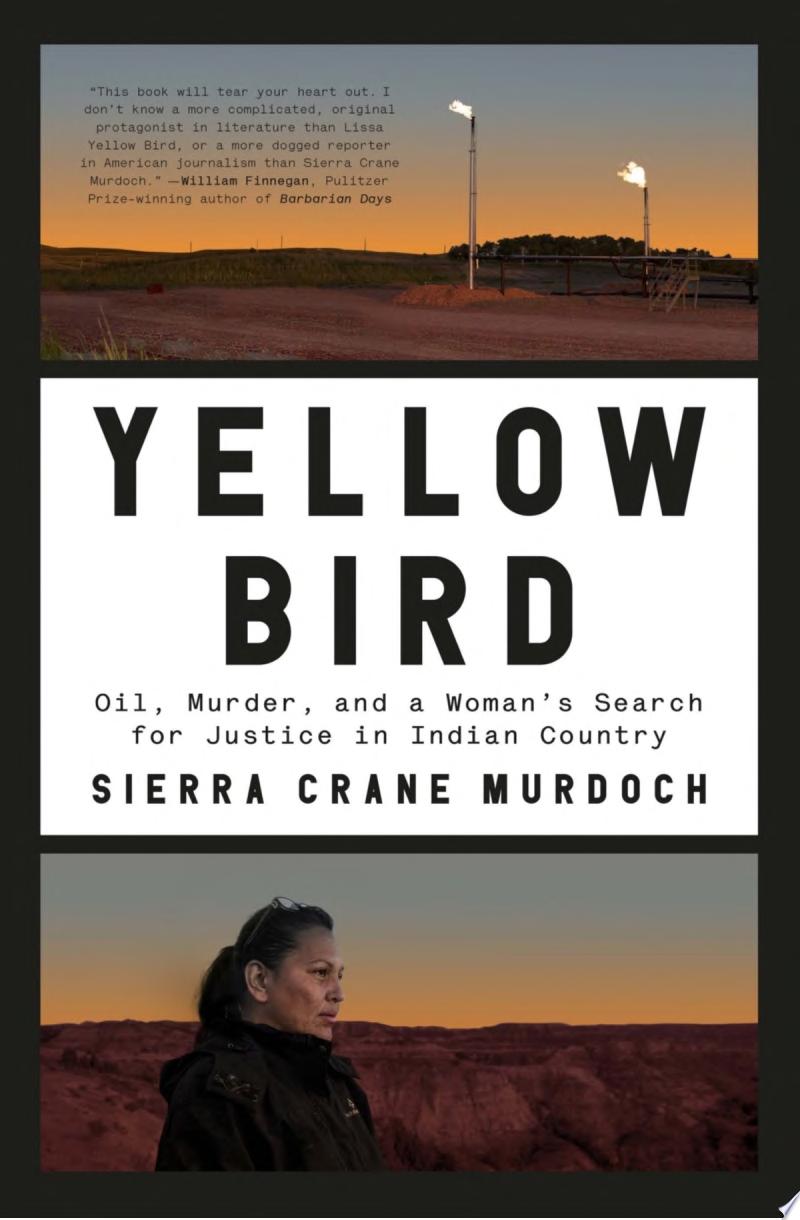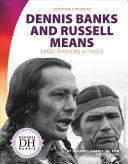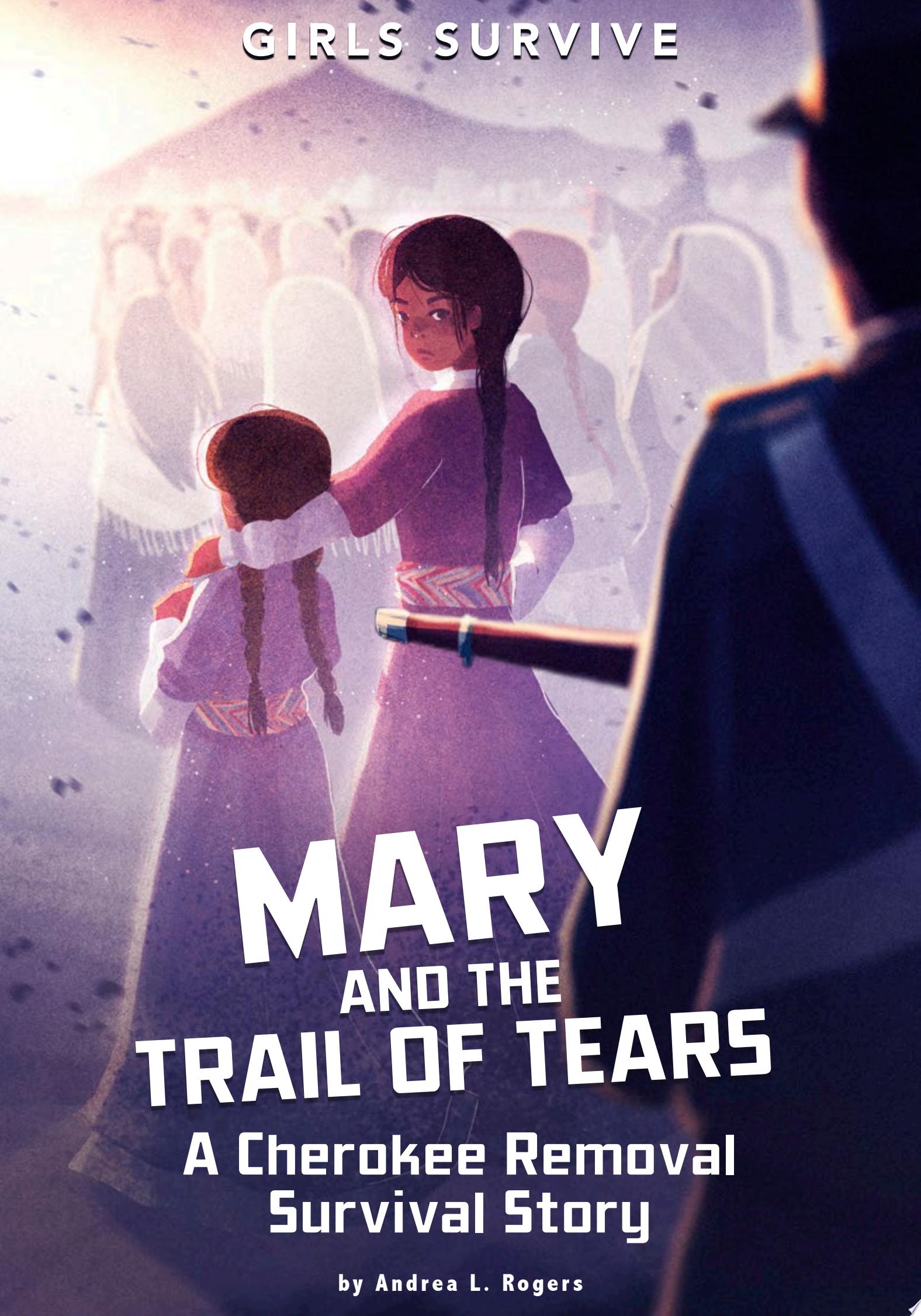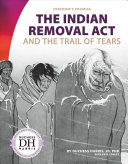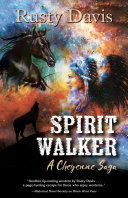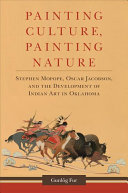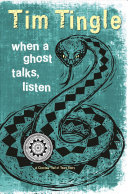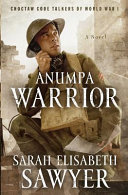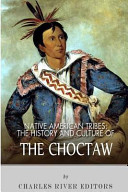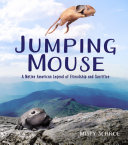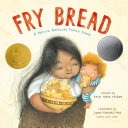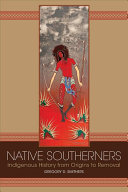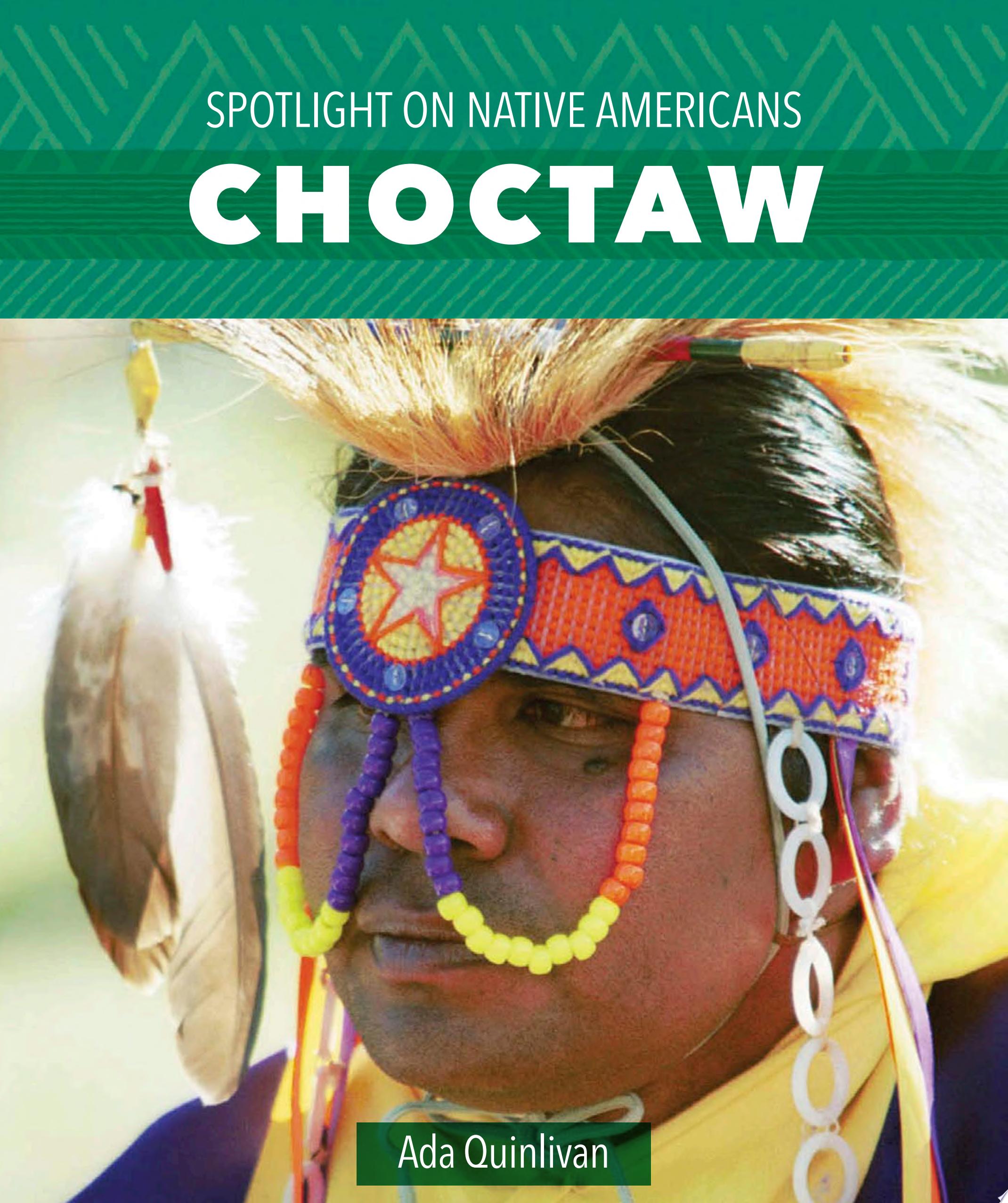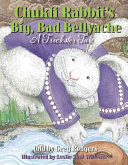List
Killers of the Flower Moon
David Grann
NEW YORK TIMES BEST SELLER - NATIONAL BOOK AWARD FINALIST
Disturbing and riveting...It will sear your soul. --Dave Eggers, New York Times Book Review
SHELF AWARENESS'S BEST BOOK OF 2017
Named a best book of the year by Wall Street Journal, The Boston Globe, San Francisco Chronicle, GQ, Time, Newsday, Entertainment Weekly, Time Magazine, NPR's Maureen Corrigan, NPR's On Point, Vogue, Smithsonian, Cosmopolitan, Seattle Times, Bloomberg, Lit Hub's Ultimate Best Books, Library Journal, Paste, Kirkus, Slate.com and Book Browse
From New Yorker staff writer David Grann, #1 New York Times best-selling author of The Lost City of Z, a twisting, haunting true-life murder mystery about one of the most monstrous crimes in American history
In the 1920s, the richest people per capita in the world were members of the Osage Indian nation in Oklahoma. After oil was discovered beneath their land, they rode in chauffeured automobiles, built mansions, and sent their children to study in Europe.
Then, one by one, the Osage began to be killed off. The family of an Osage woman, Mollie Burkhart, became a prime target. Her relatives were shot and poisoned. And it was just the beginning, as more and more members of the tribe began to die under mysterious circumstances.
In this last remnant of the Wild West--where oilmen like J. P. Getty made their fortunes and where desperadoes like Al Spencer, the "Phantom Terror," roamed--many of those who dared to investigate the killings were themselves murdered. As the death toll climbed to more than twenty-four, the FBI took up the case. It was one of the organization's first major homicide investigations and the bureau badly bungled the case. In desperation, the young director, J. Edgar Hoover, turned to a former Texas Ranger named Tom White to unravel the mystery. White put together an undercover team, including one of the only American Indian agents in the bureau. The agents infiltrated the region, struggling to adopt the latest techniques of detection. Together with the Osage they began to expose one of the most chilling conspiracies in American history.
In Killers of the Flower Moon, David Grann revisits a shocking series of crimes in which dozens of people were murdered in cold blood. Based on years of research and startling new evidence, the book is a masterpiece of narrative nonfiction, as each step in the investigation reveals a series of sinister secrets and reversals. But more than that, it is a searing indictment of the callousness and prejudice toward American Indians that allowed the murderers to operate with impunity for so long. Killers of the Flower Moon is utterly compelling, but also emotionally devastating.
Living Nations, Living Words
Joy Harjo
Joy Harjo, the first Native poet to serve as U.S. Poet Laureate, has championed the voices of Native peoples past and present. Her signature laureate project gathers the work of contemporary Native poets into a national, fully digital map of story, sound, and space, celebrating their vital and unequivocal contributions to American poetry.
This companion anthology features each poem and poet from the project--including Natalie Diaz, Ray Young Bear, Craig Santos Perez, Sherwin Bitsui, and Layli Long Soldier, among others--to offer readers a chance to hold the wealth of poems in their hands. The chosen poems reflect on the theme of place and displacement and circle the touchpoints of visibility, persistence, resistance, and acknowledgment. Each poem showcases, as Joy Harjo writes in her stirring introduction, "that heritage is a living thing, and there can be no heritage without land and the relationships that outline our kinship." In this country, poetry is rooted in the more than five hundred living indigenous nations. Living Nations, Living Words is a representative offering.
Liberty Is Sweet
Woody Holton
A sweeping reassessment of the American Revolution, showing how the Founders were influenced by overlooked Americans—women, Native Americans, African Americans, and religious dissenters.
Using more than a thousand eyewitness accounts, Liberty Is Sweet explores countless connections between the Patriots of 1776 and other Americans whose passion for freedom often brought them into conflict with the Founding Fathers. “It is all one story,” prizewinning historian Woody Holton writes.
Holton describes the origins and crucial battles of the Revolution from Lexington and Concord to the British surrender at Yorktown, always focusing on marginalized Americans—enslaved Africans and African Americans, Native Americans, women, and dissenters—and on overlooked factors such as weather, North America’s unique geography, chance, misperception, attempts to manipulate public opinion, and (most of all) disease. Thousands of enslaved Americans exploited the chaos of war to obtain their own freedom, while others were given away as enlistment bounties to whites. Women provided material support for the troops, sewing clothes for soldiers and in some cases taking part in the fighting. Both sides courted native people and mimicked their tactics.
Liberty Is Sweet gives us our most complete account of the American Revolution, from its origins on the frontiers and in the Atlantic ports to the creation of the Constitution. Offering surprises at every turn—for example, Holton makes a convincing case that Britain never had a chance of winning the war—this majestic history revivifies a story we thought we already knew.
An Afro-Indigenous History of the United States
Kyle T. Mays
The first intersectional history of the Black and Native American struggle for freedom in our country that also reframes our understanding of who was Indigenous in early America
Beginning with pre-Revolutionary America and moving into the movement for Black lives and contemporary Indigenous activism, Afro-Indigenous historian Kyle T. Mays argues that the foundations of the US are rooted in antiblackness and settler colonialism, and that these parallel oppressions continue into the present. He explores how Black and Indigenous peoples have always resisted and struggled for freedom, sometimes together, and sometimes apart. Whether to end African enslavement and Indigenous removal or eradicate capitalism and colonialism, Mays show how the fervor of Black and Indigenous peoples calls for justice have consistently sought to uproot white supremacy.
Mays uses a wide-array of historical activists and pop culture icons, “sacred” texts, and foundational texts like the Declaration of Independence and Democracy in America. He covers the civil rights movement and freedom struggles of the 1960s and 1970s, and explores current debates around the use of Native American imagery and the cultural appropriation of Black culture. Mays compels us to rethink both our history as well as contemporary debates and to imagine the powerful possibilities of Afro-Indigenous solidarity.
Includes an 8-page photo insert featuring Kwame Ture with Dennis Banks and Russell Means at the Wounded Knee Trials; Angela Davis walking with Oren Lyons after he leaves Wounded Knee, SD; former South African president Nelson Mandela with Clyde Bellecourt; and more.
Five-Dollar Indian
Lu Clifton
Upheaval comes to the Choctaw Nation of Oklahoma over a proposed Native Theme park. The odd alliance of an Apache and a Sioux promoter attracts the attention of Choctaw officers when a powwow doesn't seem to be the philanthropic fund-raiser it is touted to be. Then a fourteen-year-old Sioux boy is found dead in the Kiamichi Wilderness. The death looks like a drug overdose, but the country investigator finds other, more baffling evidence that draws in the unauthorized involvement of four tribal officers: one Sioux and three Choctaw, including Lieutenant Sam Chito.Lawmen are the "thin blue line" that holds back chaos, but each officer struggles with his own internal demons that put adherence to the code of ethics and the vows he took as an officer at risk. The dead boy's grandfather, the Sioux officer, believes he has evidence the death was murder and wants to execute his own brand of justice. Meanwhile, Sam discovers one of the promoters is a five-dollar Indian - a white man posing as native to profit at Native Americans' expense. The imposter is none other than Leon Messina, grandson of old drug lord Victor Messina - the man behind the gangland killing of Sam's father.Will mistrust, suspicion, and a deep desire for revenge prevent these four lawmen from working together to ensure justice is served?
Indian Tribes of Oklahoma
Blue Clark
Oklahoma is home to nearly forty American Indian tribes and includes the largest Native population of any state. As a result, many Americans think of the state as "Indian Country." In 2009, Blue Clark, an enrolled member of the Muscogee (Creek) Nation, produced an invaluable reference for information on the state's Native peoples. Now, building on the success of the first edition, this revised guide offers an up-to-date survey of the diverse nations that make up Oklahoma's Indian Country.
Since publication of the first edition more than a decade ago, much has changed across Indian Country--and more is known about its history and culture. Drawing from both scholarly literature and Native oral sources, Clark incorporates the most recent archaeological and anthropological research to provide insights into each individual tribe dating back to prehistoric times.
Today, the thirty-nine federally recognized tribes of Oklahoma continue to make advances in the areas of tribal governance, commerce, and all forms of arts and literature. This new edition encompasses the expansive range of tribal actions and interests in the state, including the rise of Native nation casino operations and nongaming industries, and the establishment of new museums and cultural attractions.
In keeping with the user-friendly format of the original edition, this book provides readers with the unique story of each tribe, presented in alphabetical order, from the Alabama-Quassartes to the Yuchis. Each entry contains a complete statistical and narrative summary of the tribe, covering everything from origin tales to contemporary ceremonies and tribal businesses. The entries also include tribal websites, suggested readings, and photographs depicting visitor sites, events, and prominent tribal personages.
Rez Dogs
Joseph Bruchac
****Four starred reviews!****
From the U.S.'s foremost Indigenous children's author comes a middle grade verse novel set during the COVID-19 pandemic, about a Wabanaki girl's quarantine on her grandparents' reservation and the local dog that becomes her best friend
Malian loves spending time with her grandparents at their home on a Wabanaki reservation. She's there for a visit when, suddenly, all travel shuts down. There's a new virus making people sick, and Malian will have to stay with her grandparents for the duration.
Everyone is worried about the pandemic, but Malian knows how to keep her family and community safe: She protects her grandparents, and they protect her. She doesn't go outside to play with friends, she helps her grandparents use video chat, and she listens to and learns from their stories. And when Malsum, one of the dogs living on the rez, shows up at their door, Malian's family knows that he'll protect them too.
Told in verse inspired by oral storytelling, this novel about the COVID-19 pandemic highlights the ways Malian's community has cared for one another through plagues of the past, and how they keep caring for one another today.
Killers of the Flower Moon
David Grann
NEW YORK TIMES BEST SELLER - NATIONAL BOOK AWARD FINALIST
Disturbing and riveting...It will sear your soul. --Dave Eggers, New York Times Book Review
SHELF AWARENESS'S BEST BOOK OF 2017
Named a best book of the year by Wall Street Journal, The Boston Globe, San Francisco Chronicle, GQ, Time, Newsday, Entertainment Weekly, Time Magazine, NPR's Maureen Corrigan, NPR's On Point, Vogue, Smithsonian, Cosmopolitan, Seattle Times, Bloomberg, Lit Hub's Ultimate Best Books, Library Journal, Paste, Kirkus, Slate.com and Book Browse
From New Yorker staff writer David Grann, #1 New York Times best-selling author of The Lost City of Z, a twisting, haunting true-life murder mystery about one of the most monstrous crimes in American history
In the 1920s, the richest people per capita in the world were members of the Osage Indian nation in Oklahoma. After oil was discovered beneath their land, they rode in chauffeured automobiles, built mansions, and sent their children to study in Europe.
Then, one by one, the Osage began to be killed off. The family of an Osage woman, Mollie Burkhart, became a prime target. Her relatives were shot and poisoned. And it was just the beginning, as more and more members of the tribe began to die under mysterious circumstances.
In this last remnant of the Wild West--where oilmen like J. P. Getty made their fortunes and where desperadoes like Al Spencer, the "Phantom Terror," roamed--many of those who dared to investigate the killings were themselves murdered. As the death toll climbed to more than twenty-four, the FBI took up the case. It was one of the organization's first major homicide investigations and the bureau badly bungled the case. In desperation, the young director, J. Edgar Hoover, turned to a former Texas Ranger named Tom White to unravel the mystery. White put together an undercover team, including one of the only American Indian agents in the bureau. The agents infiltrated the region, struggling to adopt the latest techniques of detection. Together with the Osage they began to expose one of the most chilling conspiracies in American history.
In Killers of the Flower Moon, David Grann revisits a shocking series of crimes in which dozens of people were murdered in cold blood. Based on years of research and startling new evidence, the book is a masterpiece of narrative nonfiction, as each step in the investigation reveals a series of sinister secrets and reversals. But more than that, it is a searing indictment of the callousness and prejudice toward American Indians that allowed the murderers to operate with impunity for so long. Killers of the Flower Moon is utterly compelling, but also emotionally devastating.
Man Called Horse
Glennette Tilley Turner
A daring account of Black Seminole warrior, chief, and diplomat John Horse and the route he forged on the Underground Railroad to gain freedom for his people
John Horse (c. 1812-1882, also known as Juan Caballo) was a famed chief, warrior, tactician, and diplomat who played a dominant role in Black Seminole affairs for half a century. His story is central to that of the Black Seminoles--descendants of Seminole Indians, free Blacks, and escaped slaves who formed an alliance in Spanish Florida. A political and military leader of mixed Seminole and African heritage, Horse defended his people from the US government, other tribes, and slave hunters.
A Man Called Horse focuses on the little-known life of Horse while also putting into historical perspective the larger story of Native Americans and especially Black Seminoles, helping to connect the missing "dots" in this period. After fighting during the Second Seminole War (1835-1842), one of the longest and most costly Native American conflicts in US history, Horse negotiated terms with the federal government and later became a guide and interpreter. Forced to relocate, he led a group of Black Seminoles to find a new home, first heading westward to Texas and later to Mexico.
Turner worked with descendants of Horse, who provided oral histories as well as many photographs and other artifacts. Her expertly researched and vetted biography depicts Horse as a complex, fascinating figure who served in many varied roles, including as a counselor of fellow Seminole leaders, an agent of the US government, and a captain in the Mexican army. But no matter the part he played, one thing remained constant: whether in battle or at the negotiating table, Horse fought tirelessly to help his people survive. The story of John Horse is a tale of daring, intrigue, and the lifelong quest for freedom.
The book includes black-and-white archival photos throughout (though the book is designed in full color), as well as a map, timeline, author's note, endnotes, and select bibliography.
Famine Pots
LeAnne Howe
The remarkable story of the money sent by the Choctaw to the Irish in 1847 is one that is often told and remembered by people in both nations. This gift was sent to the Irish from the Choctaw at the height of the potato famine in Ireland, just sixteen years after the Choctaw began their march on the Trail of Tears toward the areas west of the Mississippi River. Famine Pots honors that extraordinary gift and provides further context about and consideration of this powerful symbol of cross-cultural synergy through a collection of essays and poems that speak volumes of the empathy and connectivity between the two communities. As well as signaling patterns of movement and exchange, this study of the gift exchange invites reflection on processes of cultural formation within Choctaw and Irish society alike, and sheds light on longtime concerns surrounding spiritual and social identities. This volume aims to facilitate a fuller understanding of the historical complexities that surrounded migration and movement in the colonial world, which in turn will help lead to a more constructive consideration of the ways in which Irish and Native American Studies might be drawn together today.
Secrets of Navajo Code Talkers
Rachael L. Thomas
In wartime, unbreakable codes help armies win battles. And what better code than an advanced language. The Navajo language was key to the success of the Battle of Iwo Jima during World War II.
Read how Navajo Marines risked their lives to translate secret messages during World War II. Learn what makes the Navajo language ideal for encoding messages and the special vocabulary the code talkers used in battle. Finally, try your hand at translating messages yourself.
Braiding Sweetgrass
Robin Wall Kimmerer
A New York Times Bestseller
A Washington Post Bestseller
A Los Angeles Times Bestseller
Named a Best Essay Collection of the Decade by Literary Hub
A Book Riot Favorite Summer Read of 2020
A Food Tank Fall 2020 Reading Recommendation
Updated with a new introduction from Robin Wall Kimmerer, the special edition of Braiding Sweetgrass, reissued in honor of the fortieth anniversary of Milkweed Editions, celebrates the book as an object of meaning that will last the ages. Beautifully bound with a new cover featuring an engraving by Tony Drehfal, this edition includes a bookmark ribbon, a deckled edge, and five brilliantly colored illustrations by artist Nate Christopherson. In increasingly dark times, we honor the experience that more than 350,000 readers in North America have cherished about the book--gentle, simple, tactile, beautiful, even sacred--and offer an edition that will inspire readers to gift it again and again, spreading the word about scientific knowledge, indigenous wisdom, and the teachings of plants.
As a botanist, Robin Wall Kimmerer has been trained to ask questions of nature with the tools of science. As a member of the Citizen Potawatomi Nation, she embraces the notion that plants and animals are our oldest teachers. In Braiding Sweetgrass, Kimmerer brings these two lenses of knowledge together to take us on "a journey that is every bit as mythic as it is scientific, as sacred as it is historical, as clever as it is wise" (Elizabeth Gilbert).
Drawing on her life as an indigenous scientist, and as a woman, Kimmerer shows how other living beings--asters and goldenrod, strawberries and squash, salamanders, algae, and sweetgrass--offer us gifts and lessons, even if we've forgotten how to hear their voices. In reflections that range from the creation of Turtle Island to the forces that threaten its flourishing today, she circles toward a central argument: that the awakening of ecological consciousness requires the acknowledgment and celebration of our reciprocal relationship with the rest of the living world. For only when we can hear the languages of other beings will we be capable of understanding the generosity of the earth, and learn to give our own gifts in return.
Indigenous Peoples' Day
Katrina M. Phillips
Indigenous Peoples' Day is about celebrating! The second Monday in October is a day to honor Native American people, their histories, and cultures. People mark the day with food, dancing, and songs. Readers will discover how a shared holiday can have multiple traditions and be celebrated in all sorts of ways.
Living Nations, Living Words
Joy Harjo
Joy Harjo, the first Native poet to serve as U.S. Poet Laureate, has championed the voices of Native peoples past and present. Her signature laureate project gathers the work of contemporary Native poets into a national, fully digital map of story, sound, and space, celebrating their vital and unequivocal contributions to American poetry.
This companion anthology features each poem and poet from the project--including Natalie Diaz, Ray Young Bear, Craig Santos Perez, Sherwin Bitsui, and Layli Long Soldier, among others--to offer readers a chance to hold the wealth of poems in their hands. The chosen poems reflect on the theme of place and displacement and circle the touchpoints of visibility, persistence, resistance, and acknowledgment. Each poem showcases, as Joy Harjo writes in her stirring introduction, "that heritage is a living thing, and there can be no heritage without land and the relationships that outline our kinship." In this country, poetry is rooted in the more than five hundred living indigenous nations. Living Nations, Living Words is a representative offering.
The Water Lady
Alice B. McGinty
This inspiring picture book tells the true story of a woman who brings desperately needed water to families on the Navajo reservation every day.
Underneath the New Mexico sky, a Navajo boy named Cody finds that his family's barrels of water are empty. He checks the chicken coop-- nothing. He walks down the road to the horses' watering hole. Dry. Meanwhile, a few miles away, Darlene Arviso drives a school bus and picks up students for school. After dropping them off, she heads to another job: she drives her big yellow tanker truck to the water tower, fills it with three thousand gallons of water, and returns to the reservation, bringing water to Cody's family, and many, many others. Here is the incredible and inspiring true story of a Native American woman who continuously gives back to her community and celebrates her people.
Nedí Nezu
Tenille Campbell
A celebratory, slyly funny, and bluntly honest take on sex and romance in NDN Country.
nedi nezu (Good Medicine) explores the beautiful space that being a sensual Indigenous woman creates - not only as a partner, a fantasy, a heartbreak waiting to happen but also as an auntie, a role model, a voice that connects to others walking the same path. From the online hookup world of DMs, double taps, and secret texts to earth-shakingly erotic encounters under the northern stars to the ever-complicated relationship Indigenous women have with mainstream society, this poetry collection doesn't shy away from depicting the gorgeous diversity in decolonized desire. Instead, Campbell creates the most intimate of spaces, where the tea is hot and a seat is waiting, surrounded by the tantalizing laughter of aunties telling stories.
These wise, jubilant poems chronicle many failed attempts at romance, with the wry humour needed to not take these heartbreaks personally, and the growth that comes from sitting in the silence of living a solo life in a world that insists everyone should be partnered up. With a knowing smile, this book side-eyes the political existence and celebrates the lived experience of an Indigenous woman falling in love and lust with those around her -but, most importantly, with herself.
nedi nezu is a smart, sensual, and scandalous collection dripping in Indigenous culture yet irresistible to anyone in thrall to the magnificent disaster that is dating, sex, and relationships.
Hunting Badger
Tony Hillerman
"Hillerman continues to dazzle. . . . A standout." -- Washington Book World
The fourteenth novel featuring Leaphorn and Chee by New York Times bestselling author Tony Hillerman.
Three men raid the gambling casino run by the Ute nation and then disappear into the maze of canyons on the Utah-Arizona border. When the FBI, with its helicopters and high-tech equipment, focuses on a wounded deputy sheriff as a possible suspect, Navajo Tribal Police Sergeant Jim Chee and his longtime colleague, retired Lieutenant Joe Leaphorn, launch an investigation of their own. Chee sees a dangerous flaw in the federal theory; Leaphorn sees intriguing connections to the exploits of a legendary Ute bandit-hero. And together, they find themselves caught up in the most perplexing--and deadly--criminal manhunt of their lives.
Classified
Traci Sorell
Mary Golda Ross designed classified airplanes and spacecraft as Lockheed Aircraft Corporation's first female engineer. Find out how her passion for math and the Cherokee values she was raised with shaped her life and work.
Cherokee author Traci Sorell and Métis illustrator Natasha Donovan trace Ross's journey from being the only girl in a high school math class to becoming a teacher to pursuing an engineering degree, joining the top-secret Skunk Works division of Lockheed, and being a mentor for Native Americans and young women interested in engineering. In addition, the narrative highlights Cherokee values including education, working cooperatively, remaining humble, and helping ensure equal opportunity and education for all.
"A stellar addition to the genre that will launch careers and inspire for generations, it deserves space alongside stories of other world leaders and innovators."--starred, Kirkus Reviews
The First Code Talkers
William C. Meadows
Many Americans know something about the Navajo code talkers in World War II--but little else about the military service of Native Americans, who have served in our armed forces since the American Revolution, and still serve in larger numbers than any other ethnic group. But, as we learn in this splendid work of historical restitution, code talking originated in World War I among Native soldiers whose extraordinary service resulted, at long last, in U.S. citizenship for all Native Americans.
The first full account of these forgotten soldiers in our nation's military history, The First Code Talkers covers all known Native American code talkers of World War I--members of the Choctaw, Oklahoma Cherokee, Comanche, Osage, and Sioux nations, as well as the Eastern Band of Cherokee and Ho-Chunk, whose veterans have yet to receive congressional recognition. William C. Meadows, the foremost expert on the subject, describes how Native languages, which were essentially unknown outside tribal contexts and thus could be as effective as formal encrypted codes, came to be used for wartime communication. While more than thirty tribal groups were eventually involved in World Wars I and II, this volume focuses on Native Americans in the American Expeditionary Forces during the First World War.
Drawing on nearly thirty years of research--in U.S. military and Native American archives, surviving accounts from code talkers and their commanding officers, family records, newspaper accounts, and fieldwork in descendant communities--the author explores the origins, use, and legacy of the code talkers. In the process, he highlights such noted decorated veterans as Otis Leader, Joseph Oklahombi, and Calvin Atchavit and scrutinizes numerous misconceptions and popular myths about code talking and the secrecy surrounding the practice.
With appendixes that include a timeline of pertinent events, biographies of known code talkers, and related World War I data, this book is the first comprehensive work ever published on Native American code talkers in the Great War and their critical place in American military history.
Iwígara
Enrique Salmón
Iwígara, when translated, means the kinship of plants and people. And that is exactly what Enrique Salmón explores in this important book. Iwígara shares culturally specific information about 80 plants, addressing their historical and modern-day uses as medicine, food, spices, and more. Iwígara includes plants entries derived from many different American Indian tribes and seven geographic regions across the United States. Each plant entry includes the names commonly used by different tribes, a color photograph, a short description, rich details about how the plant is used, and tips on identification and ethical harvest. Traditional stories and myths, along with images of the plants from different forms of Native American arts and crafts, enrich the text.
The Wailing Wind
Tony Hillerman
"Tony Hillerman's novels are like no others. His insightful portrayal of the vast Navajo Reservation, the spirit-haunted people who inhabit it and the clash between ancient traditions and modern civilization that has shaped its present and will determine its future has produced a body of work unique in mystery fiction."--
San Diego Union-TribuneLegendary detectives Leaphorn and Chee are pulled into mysteries old and new in this haunting tale of obsessive greed, lost love, and murder from the "national literary and cultural sensation" (Los Angeles Times)--New York Times bestselling author Tony Hillerman.
Officer Bernadette Manuelito finds the dead man slumped over in the cab of a pickup, with a rich ex-con's phone number in his pocket . . . and a tobacco tin filled with placer gold. She figures he's just another drunk--an assumption that gets her in trouble for mishandling a crime scene and brings down the wrath of the FBI on her supervisor, Sergeant Jim Chee of the Navajo Tribal Police.
For Chee's mentor, former Lieutenant Joe Leaphorn, the death eerily echoes a long dormant cold case. Years earlier, Leaphorn followed the trail of a beautiful, young, and missing wife to a dead end, and the failure to close that investigation has haunted him ever since. This new case could lead to the truth, and the legendary lawman comes out of retirement, determined to solve it.
But ghosts never sleep in these high, lonely Southwestern hills. For Bernie, Leaphorn, and Chee, the twisted threads of craven murders past and current may finally be coming together, as the desert gives up its secrets . . . secrets heard in the wailing wind.
When the Light of the World Was Subdued, Our Songs Came Through
Joy Harjo
United States Poet Laureate Joy Harjo gathers the work of more than 160 poets, representing nearly 100 indigenous nations, into one momentous volume. This landmark anthology celebrates the indigenous peoples of North America, the first poets of this country, whose literary traditions stretch back centuries.
Opening with a blessing from Pulitzer Prize winner N. Scott Momaday, the book contains powerful introductions from contributing editors who represent the five geographically organized sections. Each section begins with a poem from the massive libraries of oral literatures and closes with emerging poets, ranging from Eleazar, a seventeenth-century Native student at Harvard, to Jake Skeets, a young Din h poet born in 1991, and including renowned writers such as Natalie Diaz, Tommy Pico, Layli Long Soldier, and Ray Young Bear. In When the Light of the World Was Subdued, Our Songs Came Through, Harjo offers the extraordinary sweep of Native literature.
The Odyssey of Geronimo
W. Michael Farmer
"The Odyssey of Geronimo, based on history and Apache culture, but told through his eyes using the truth from fiction, is a revealing epic of his strengths, weaknesses, and character. As a prisoner of war twenty-three years, Geronimo escaped being hanged by civil authorities in Arizona, rose to become a national "superstar," and became an astute businessman. During his captivity, Geronimo fathered two children, lost three wives, and married two more. When he died from pneumonia after sleeping drunk all night in a cold rain, he had a small fortune in a Lawton, Oklahoma, bank from selling his autographs, autographed pictures, headdresses, bows and arrows, and other mementos. He was hated by some of his own people, loved by others, but respected by all"--
Oak Flat
Lauren Redniss
A powerful work of visual nonfiction about three generations of an Apache family struggling to protect sacred land from a multinational mining corporation, by MacArthur "Genius" and National Book Award finalist Lauren Redniss, the acclaimed author of Thunder & Lightning.
"Lauren Redniss has produced a supernova. . . . A vivid, searing, indelible act of witness."--Patrick Radden Keefe, New York Times bestselling author of Say Nothing
Oak Flat is a serene high-elevation mesa that sits above the southeastern Arizona desert, fifteen miles to the west of the San Carlos Apache Indian Reservation. For the San Carlos tribe, Oak Flat is a holy place, an ancient burial ground and religious site where Apache girls celebrate the coming-of-age ritual known as the Sunrise Ceremony. In 1995, a massive untapped copper reserve was discovered nearby. A decade later, a law was passed transferring the area to a private company, whose planned copper mine will wipe Oak Flat off the map--sending its natural springs, petroglyph-covered rocks, and old-growth trees tumbling into a void.
Redniss's deep reporting and haunting artwork anchor this mesmerizing human narrative. Oak Flat tells the story of a race-against-time struggle for a swath of American land, which pits one of the poorest communities in the United States against the federal government and two of the world's largest mining conglomerates. The book follows the fortunes of two families with profound connections to the contested site: the Nosies, an Apache family whose teenage daughter is an activist and leader in the Oak Flat fight, and the Gorhams, a mining family whose patriarch was a sheriff in the lawless early days of Arizona statehood.
The still-unresolved Oak Flat conflict is ripped from today's headlines, but its story resonates with foundational American themes: the saga of westward expansion, the resistance and resilience of Native peoples, and the efforts of profiteers to control the land and unearth treasure beneath it while the lives of individuals hang in the balance.
The First Eagle
Tony Hillerman
For acting Lieutenant Jim Chee, the murder of a Navajo Tribal Police officer seems like an open-and-shut case when he discovers a Hopi poacher huddled over the victim's butchered corpse. However, Chee's newly retired predecessor, Joe Leaphorn, believes otherwise.
Hired to find a missing biologist who was searching for the key to a virulent hidden plague—and who vanished in the same area and on the same day the policeman was slain—Leaphorn suspects both events are somehow connected. And the reported sighting of a "skinwalker"—a Navajo witch—has Leaphorn and Chee seeking answers to a deadly riddle in a dark place where superstition and science collide.
Tecumseh and the Prophet
Peter Cozzens
"An insightful, unflinching portrayal of the remarkable siblings who came closer to altering the course of American history than any other Indian leaders."
--Professor H.W. Brands, author of The Zealot and the Emancipator and Heirs of the Founders
The first biography of the great Shawnee leader in more than twenty years, and the first to make clear that his misunderstood younger brother, Tenskwatawa, was an equal partner in the last great pan-Indian alliance against the United States.
Until the Americans killed Tecumseh in 1813, he and his brother Tenskwatawa were the co-architects of the broadest pan-Indian confederation in United States history. In previous accounts of Tecumseh's life, Tenskwatawa has been dismissed as a talentless charlatan and a drunk. But award-winning historian Peter Cozzens now shows us that while Tecumseh was a brilliant diplomat and war leader--admired by the same white Americans he opposed--it was Tenskwatawa, called the "Shawnee Prophet," who created a vital doctrine of religious and cultural revitalization that unified the disparate tribes of the Old Northwest. Detailed research of Native American society and customs provides a window into a world often erased from history books and reveals how both men came to power in different but no less important ways.
Cozzens brings us to the forefront of the chaos and violence that characterized the young American Republic, when settlers spilled across the Appalachians to bloody effect in their haste to exploit lands won from the British in the War of Independence, disregarding their rightful Indian owners. Tecumseh and the Prophet presents the untold story of the Shawnee brothers who retaliated against this threat--the two most significant siblings in Native American history, who, Cozzens helps us understand, should be writ large in the annals of America.
The Sea-Ringed World
Maria Garcia Esperon
"Fifteen thousand years before Europeans stepped foot in the Americas, people had already spread from tip to tip and coast to coast. Like all humans, these Native Americans sought to understand their place in the universe, the nature of their relationship with the divine, and the origin of the world into which their ancestors had emerged. The answers lay in their sacred stories. Author Maíra Garíca Espeórn, illustrator Amanda Mijangos, and translator David Bowles have gifted us a treasure. Their talents have woven this collection of stories from nations and cultures across our two continents--the Sea-Ringed World, as the Aztecs called it--from the edge of Argentina all the way up to Alaska. The Em Querido list seeks to introduce the finest books in translation from around the world to an American audience. We feel lucky to be bringing you this book on our inaugural list, which we hope will be a true window and mirror. "--Provided by publisher.
The Removed
Brandon Hobson
"A haunted work, full of voices old and new. It is about a family's reckoning with loss and injustice, and it is about a people trying for the same. The journey of this family's way home is full--in equal measure--of melancholy and love."
--Tommy Orange, author of There There
A RECOMMENDED BOOK FROM
USA Today * O, the Oprah Magazine * Entertainment Weekly * Harper's Bazaar * Buzzfeed * Washington Post * Elle * Parade * San Francisco Chronicle * Good Housekeeping * Vulture * Refinery29 * AARP * Kirkus * PopSugar * Alma * Woman's Day * Chicago Review of Books * The Millions * Biblio Lifestyle * Library Journal * Publishers Weekly * LitHub
Steeped in Cherokee myths and history, a novel about a fractured family reckoning with the tragic death of their son long ago--from National Book Award finalist Brandon Hobson
In the fifteen years since their teenage son, Ray-Ray, was killed in a police shooting, the Echota family has been suspended in private grief. The mother, Maria, increasingly struggles to manage the onset of Alzheimer's in her husband, Ernest. Their adult daughter, Sonja, leads a life of solitude, punctuated only by spells of dizzying romantic obsession. And their son, Edgar, fled home long ago, turning to drugs to mute his feelings of alienation.
With the family's annual bonfire approaching--an occasion marking both the Cherokee National Holiday and Ray-Ray's death, and a rare moment in which they openly talk about his memory--Maria attempts to call the family together from their physical and emotional distances once more. But as the bonfire draws near, each of them feels a strange blurring of the boundary between normal life and the spirit world. Maria and Ernest take in a foster child who seems to almost miraculously keep Ernest's mental fog at bay. Sonja becomes dangerously fixated on a man named Vin, despite--or perhaps because of--his ties to tragedy in her lifetime and lifetimes before. And in the wake of a suicide attempt, Edgar finds himself in the mysterious Darkening Land: a place between the living and the dead, where old atrocities echo.
Drawing deeply on Cherokee folklore, The Removed seamlessly blends the real and spiritual to excavate the deep reverberations of trauma--a meditation on family, grief, home, and the power of stories on both a personal and ancestral level.
"The Removed is a marvel. With a few sly gestures, a humble array of piercingly real characters and an apparently effortless swing into the dire dreamlife, Brandon Hobson delivers an act of regeneration and solace. You won't forget it." --Jonathan Lethem, author of The Feral Detective
Redbone
Christian Staebler
Experience the riveting, powerful story of the Native American civil rights movement and the resulting struggle for identity told through the high-flying career of west coast rock n' roll pioneers Redbone.
You've heard the hit song "Come and Get Your Love" in the movie Guardians of the Galaxy, but the story of the band behind it is one of cultural, political, and social importance.
Brothers Pat and Lolly Vegas were talented Native American rock musicians that took the 1960s Sunset Strip by storm. They influenced The Doors and jammed with Jimmy Hendrix before he was "Jimi," and the idea of a band made up of all Native Americans soon followed. Determined to control their creative vision and maintain their cultural identity, they eventually signed a deal with Epic Records in 1969. But as the American Indian Movement gained momentum the band took a stand, choosing pride in their ancestry over continued commercial reward.
Created in cooperation of the Vegas family, authors Christian Staebler and Sonia Paolini with artist Thibault Balahy take painstaking steps to ensure the historical accuracy of this important and often overlooked story of America's past. Part biography and part research journalism, Redbone provides a voice to a people long neglected in American history.
One Real American
Joseph Bruchac
Children's book icon Joseph Bruchac tells the fascinating story of a Seneca (Iroquois) Civil War officer
Ely S. Parker (1828-1895) is one of the most unique but little-known figures in US history. A member of the Seneca (Iroquois) Nation, Parker was an attorney, engineer, and tribal diplomat. Raised on a reservation but schooled at a Catholic institution, he learned English at a young age and became an interpreter for his people. During the American Civil War, he was commissioned as a lieutenant colonel and was the primary draftsman of the terms of the Confederate surrender at Appomattox. He eventually became President Grant's Commissioner of Indian Affairs, the first Native American to hold that post. Award-winning children's book author and Native American scholar Joseph Bruchac provides an expertly researched, intimate look at a man who achieved great success in two worlds yet was caught between them. Includes archival photos, maps, endnotes, bibliography, and timeline.
Why We Serve
NMAI
Rare stories from more than 250 years of Native Americans' service in the military
Why We Serve commemorates the 2020 opening of the National Native American Veterans Memorial at the Smithsonian National Museum of the American Indian, the first landmark in Washington, DC, to recognize the bravery and sacrifice of Native veterans. American Indians' history of military service dates to colonial times, and today, they serve at one of the highest rates of any ethnic group. Why We Serve explores the range of reasons why, from love of their home to an expression of their warrior traditions. The book brings fascinating history to life with historical photographs, sketches, paintings, and maps. Incredible contributions from important voices in the field offer a complex examination of the history of Native American service. Why We Serve celebrates the unsung legacy of Native military service and what it means to their community and country.
Ancestor Approved: Intertribal Stories for Kids
Cynthia L. Smith
Edited by award-winning and bestselling author Cynthia Leitich Smith, this collection of intersecting stories by both new and veteran Native writers bursts with hope, joy, resilience, the strength of community, and Native pride.
Native families from Nations across the continent gather at the Dance for Mother Earth Powwow in Ann Arbor, Michigan.
In a high school gym full of color and song, people dance, sell beadwork and books, and celebrate friendship and heritage. Young protagonists will meet relatives from faraway, mysterious strangers, and sometimes one another (plus one scrappy rez dog).
They are the heroes of their own stories.
Featuring stories and poems by:
Joseph Bruchac
Art Coulson
Christine Day
Eric Gansworth
Carole Lindstrom
Dawn Quigley
Rebecca Roanhorse
David A. Robertson
Andrea L. Rogers
Kim Rogers
Cynthia Leitich Smith
Monique Gray Smith
Traci Sorell,
Tim Tingle
Erika T. Wurth
Brian Young
In partnership with We Need Diverse Books
We Had a Little Real Estate Problem
Kliph Nesteroff
From Kliph Nesteroff, “the human encyclopedia of comedy” (VICE), comes the important and underappreciated story of Native Americans and comedy.
It was one of the most reliable jokes in Charlie Hill’s stand-up routine: “My people are from Wisconsin. We used to be from New York. We had a little real estate problem.”
In We Had a Little Real Estate Problem, acclaimed comedy historian Kliph Nesteroff focuses on one of comedy’s most significant and little-known stories: how, despite having been denied representation in the entertainment industry, Native Americans have influenced and advanced the art form.
The account begins in the late 1880s, when Native Americans were forced to tour in wild west shows as an alternative to prison. (One modern comedian said it was as “if a Guantanamo detainee suddenly had to appear on X-Factor.”) This is followed by a detailed look at the life and work of seminal figures such as Cherokee humorist Will Rogers and Hill, who in the 1970s was the first Native American comedian to appear The Tonight Show.
Also profiled are several contemporary comedians, including Jonny Roberts, a social worker from the Red Lake Nation who drives five hours to the closest comedy club to pursue his stand-up dreams; Kiowa-Apache comic Adrianne Chalepah, who formed the touring group the Native Ladies of Comedy; and the 1491s, a sketch troupe whose satire is smashing stereotypes to critical acclaim. As Ryan Red Corn, the Osage member of the 1491s, says: “The American narrative dictates that Indians are supposed to be sad. It’s not really true and it’s not indicative of the community experience itself…Laughter and joy is very much a part of Native culture.”
Featuring dozens of original interviews and the exhaustive research that is Nesteroff’s trademark, We Had a Little Real Estate Problem is a powerful tribute to a neglected legacy.
Padoskoks
Joseph Bruchac
With a bang--or rather, a barrage--Jacob Neptune finds his remote cabin in the Adirondacks besieged by a gun-toting gang of murderous bikers. With the help of his supersized sidekick Dennis, the hard-headed, wise-cracking Abenaki private detective traces the source of his troubles to a former adversary who is now running an Indian casino.
In short order, the friends are drawn into a dangerous mystery that will call upon all of Jake's skills as a martial arts expert, former special forces soldier, and--in the Abenaki tradition--a metoulin, one who can see beneath the surface of things through dreams and visions. Their investigation takes them to the Pacific Northwest, dead center in a vicious game involving tribal intrigue, a crooked casino, Chinese billions, a captive killer whale--and a series of murders and disappearances that may be linked to the monster known by Jake's people as Padoskoks, the giant underwater serpent.
Like Chenoo, the first in the Jacob Neptune series, Padoskoks has an explosive start and keeps gathering speed, giving readers a glimpse of the ancient wisdom and Native customs swirling just under the surface as the action-packed plot barrels toward its natural, if startling, conclusion.
The Indian School
Gloria Whelan
When shy, ten-year-old Lucy comes to live with her aunt and uncle at their mission school, she's surprised at the number of harsh rules and restrictions imposed on the children. She wonders why the Indians should have to do all the changing and why her aunt is so strict with them. Then a girl runs away in protest and Lucy knows she must overcome her timidity and stand up to her aunt--no matter what the consequences.
Killing Crazy Horse
Bill O'Reilly
The latest installment of the multimillion-selling Killing series is a gripping journey through the American West and the historic clashes between Native Americans and settlers.
The bloody Battle of Tippecanoe was only the beginning. It’s 1811 and President James Madison has ordered the destruction of Shawnee warrior chief Tecumseh’s alliance of tribes in the Great Lakes region. But while General William Henry Harrison would win this fight, the armed conflict between Native Americans and the newly formed United States would rage on for decades.
Bestselling authors Bill O’Reilly and Martin Dugard venture through the fraught history of our country’s founding on already occupied lands, from General Andrew Jackson’s brutal battles with the Creek Nation to President James Monroe’s epic “sea to shining sea” policy, to President Martin Van Buren’s cruel enforcement of a “treaty” that forced the Cherokee Nation out of their homelands along what would be called the Trail of Tears. O’Reilly and Dugard take readers behind the legends to reveal never-before-told historical moments in the fascinating creation story of America.
This fast-paced, wild ride through the American frontier will shock readers and impart unexpected lessons that reverberate to this day.
Elatsoe
Darcie Little Badger
A National Indie Bestseller
TIME's Best 100 Fantasy Books of All Time
An NPR Best Book of 2020
A Booklist's Top 10 First Novel for Youth
A BookPage Best Book of 2020
A CPL Best of the Best Book
A Publishers Weekly Best Book of 2020
A Buzzfeed Best YA SFF Book of 2020
A Shelf Awareness Best Book of 2020
An AICL Best YA Book of 2020
A Kirkus Best YA Book of 2020
A Tor Best Book of 2020
PRAISE
Groundbreaking. --TIME
Deeply enjoyable from start to finish. --NPR
Utterly magical. --SyFyWire
Atmospheric and lyrical...a gorgeous work of art. --BuzzFeed
One of the best YA debuts of 2020. Read it. --Marieke Nijkamp
FIVE STARRED REVIEWS
★ A fresh voice and perspective. --Booklist, starred review
★ A unique and powerful Native American voice. --BookPage, starred review
★ A brilliant, engaging debut. --Kirkus Reviews, starred review
★ A fast-paced murder mystery. --Publishers Weekly, starred review
★ A Lipan Apache Sookie Stackhouse for the teen set. --Shelf-Awareness, starred review
A Texas teen comes face-to-face with a cousin's ghost and vows to unmask the murderer.
Elatsoe--Ellie for short--lives in an alternate contemporary America shaped by the ancestral magics and knowledge of its Indigenous and immigrant groups. She can raise the spirits of dead animals--most importantly, her ghost dog Kirby. When her beloved cousin dies, all signs point to a car crash, but his ghost tells her otherwise: He was murdered.
Who killed him and how did he die? With the help of her family, her best friend Jay, and the memory great, great, great, great, great, great grandmother, Elatsoe, must track down the killer and unravel the mystery of this creepy town and its dark past. But will the nefarious townsfolk and a mysterious Doctor stop her before she gets started?
A breathtaking debut novel featuring an asexual, Apache teen protagonist, Elatsoe combines mystery, horror, noir, ancestral knowledge, haunting illustrations, fantasy elements, and is one of the most-talked about debuts of the year.
Native
Kaitlin B. Curtice
"Native is about identity, soul-searching, and the never-ending journey of finding ourselves and finding God. As both a citizen of the Potawatomi Nation and a Christian, Kaitlin Curtice offers a unique perspective on these topics. In this book, she shows how reconnecting with her Potawatomi identity both informs and challenges her faith. Curtice draws on her personal journey, poetry, imagery, and stories of the Potawatomi people to address themes at the forefront of today's discussions of faith and culture in a positive and constructive way. She encourages us to embrace our own origins and to share and listen to each other's stories so we can build a more inclusive and diverse future. Each of our stories matters for the church to be truly whole. As Curtice shares what it means to experience her faith through the lens of her Indigenous heritage, she reveals that a vibrant spirituality has its origins in identity, belonging, and a sense of place."--
Highway of Tears
Jessica McDiarmid
For decades, Indigenous women and girls have gone missing or been found murdered along an isolated stretch of highway in northwestern British Columbia. The corridor is known as the Highway of Tears, and it has come to symbolize a national crisis.
Sacagawea
Laura K. Murray
How much do you know about Sacagawea? Find out the facts you need to know about this American Indian who helped guide the Lewis and Clark Expedition. You'll learn about the early life, challenges, and major accomplishments of this important American.
An Honest Enemy
Paul Magid
Over the course of his military career, George Crook developed empathy and admiration for American Indians both as foes and as allies. As Paul Magid has demonstrated in the previous two volumes of his groundbreaking biography, this experience prepared Crook well for his metamorphosis from Indian fighter to outspoken advocate of Indian rights.
An Honest Enemy is the third and final volume of Magid's account of George Crook's life and involvement in the Indian wars. Using rarely tapped information, including Crook's own diaries, the work documents in dramatic detail the general's arduous and dangerous campaigns against the Chiricahua Apaches and their leader Geronimo, action that forms a backdrop to the transformation in the general's role vis-à-vis Native Americans.
In a story by turns harrowing and tragic, Magid details the plight of Indians who, in the aftermath of their defeat, were consigned to reservations too barren to sustain them, where they were subjected to impoverishment, indifference, and in many cases, outright corruption. With growing anger, Crook watched as many tribes faced death from starvation and disease and, unwilling to passively accept their fate, desperately sought to flee their reservations and return to their homelands. Charged with the grim task of returning the Indians to such conditions, Crook was forced to choose between fulfilling his duties as a soldier and his humanitarian values. Magid describes Crook's struggle to reconcile these conflicting concerns while promoting policies he regarded as essential to the welfare of the Indians in the face of a hostile public, jealous fellow officers, and an unsympathetic government that regarded his efforts as quixotic and misguided. Here is a tale that readers will not soon forget.
Ben and the Missing Pony
Una Belle Townsend
When Ben and C.W. discover an injured pony, they shelter the horse in an abandoned barn. Then the boys feed, water, and bandage the pony's wounds. Finally, they decide to keep the horse. After all, whoever owned the horse before didn't take care of it.
When the two friends discover the pony was probably stolen, they must make a decision. Keep their secret, or return the horse to its owner.
Through a Native Lens
Nicole Strathman
What is American Indian photography? At the turn of the twentieth century, Edward Curtis began creating romantic images of American Indians, and his works--along with pictures by other non-Native photographers--came to define the field. Yet beginning in the second half of the nineteenth century, American Indians themselves started using cameras to record their daily activities and to memorialize tribal members. Through a Native Lens offers a refreshing, new perspective by highlighting the active contributions of North American Indians, both as patrons who commissioned portraits and as photographers who created collections.
In this richly illustrated volume, Nicole Dawn Strathman explores how indigenous peoples throughout the United States and Canada appropriated the art of photography and integrated it into their lifeways. The photographs she analyzes date to the first one hundred years of the medium, between 1840 and 1940. To account for Native activity both in front of and behind the camera, the author divides her survey into two parts. Part I focuses on Native participants, including such public figures as Sarah Winnemucca and Red Cloud, who fashioned themselves in deliberate ways for their portraits. Part II examines Native professional, semiprofessional, and amateur photographers.
Drawing from tribal and state archives, libraries, museums, and individual collections, Through a Native Lens features photographs--including some never before published--that range from formal portraits to casual snapshots. The images represent multiple tribal communities across Native North America, including the Inland Tlingit, Northern Paiute, and Kiowa. Moving beyond studies of Native Americans as photographic subjects, this groundbreaking book demonstrates how indigenous peoples took control of their own images and distinguished themselves as pioneers of photography.
Powwow
Karen Pheasant-Neganigwane
★ "Clearly organized and educational--an incredibly useful tool for both school and public libraries." --School Library Journal, starred review
Powwow is a celebration of Indigenous song and dance. Journey through the history of powwow culture in North America, from its origins to the thriving powwow culture of today. As a lifelong competitive powwow dancer, Karen Pheasant-Neganigwane is a guide to the protocols, regalia, songs, dances and even food you can find at powwows from coast to coast, as well as the important role they play in Indigenous culture and reconciliation.
The Only Good Indians
Stephen Graham Jones
A NEW YORK TIMES BESTSELLER
From USA TODAY bestselling author Stephen Graham Jones comes a “masterpiece” (Locus Magazine) of a novel about revenge, cultural identity, and the cost of breaking from tradition. Labeled “one of 2020’s buzziest horror novels” (Entertainment Weekly), this is a remarkable horror story that “will give you nightmares—the good kind of course” (BuzzFeed).
From New York Times bestselling author Stephen Graham Jones comes a novel that is equal parts psychological horror and cutting social commentary on identity politics and the American Indian experience. Fans of Jordan Peele and Tommy Orange will love this story as it follows the lives of four American Indian men and their families, all haunted by a disturbing, deadly event that took place in their youth. Years later, they find themselves tracked by an entity bent on revenge, totally helpless as the culture and traditions they left behind catch up to them in a violent, vengeful way.
Yellow Bird
Sierra Crane Murdoch
The gripping true story of a murder on an Indian reservation, and the unforgettable Arikara woman who becomes obsessed with solving it--an urgent work of literary journalism.
"I don't know a more complicated, original protagonist in literature than Lissa Yellow Bird, or a more dogged reporter in American journalism than Sierra Crane Murdoch."--William Finnegan, Pulitzer Prize-winning author of Barbarian Days
When Lissa Yellow Bird was released from prison in 2009, she found her home, the Fort Berthold Indian Reservation in North Dakota, transformed by the Bakken oil boom. In her absence, the landscape had been altered beyond recognition, her tribal government swayed by corporate interests, and her community burdened by a surge in violence and addiction. Three years later, when Lissa learned that a young white oil worker, Kristopher "KC" Clarke, had disappeared from his reservation worksite, she became particularly concerned. No one knew where Clarke had gone, and few people were actively looking for him.
Yellow Bird traces Lissa's steps as she obsessively hunts for clues to Clarke's disappearance. She navigates two worlds--that of her own tribe, changed by its newfound wealth, and that of the non-Native oilmen, down on their luck, who have come to find work on the heels of the economic recession. Her pursuit of Clarke is also a pursuit of redemption, as Lissa atones for her own crimes and reckons with generations of trauma. Yellow Bird is an exquisitely written, masterfully reported story about a search for justice and a remarkable portrait of a complex woman who is smart, funny, eloquent, compassionate, and--when it serves her cause--manipulative. Drawing on eight years of immersive investigation, Sierra Crane Murdoch has produced a profound examination of the legacy of systematic violence inflicted on a tribal nation and a tale of extraordinary healing.
Dennis Banks and Russell Means
Duchess Harris
In the 1960s and 1970s, Dennis Banks and Russell Means helped lead the fight for Native civil rights. They organized protests and asked the US government to stop mistreating Native Americans. Dennis Banks and Russell Means: Native American Activistsexplores these activists' lives and their legacies. Easy-to-read text, vivid images, and helpful back matter give readers a clear look at this subject. Features include a table of contents, infographics, a glossary, additional resources, and an index. Aligned to Common Core Standards and correlated to state standards. Core Library is an imprint of Abdo Publishing, a division of ABDO.
Mary and the Trail of Tears
Andrea L. Rogers
Twelve-year-old Mary and her Cherokee family are forced out of their home in Georgia by U.S. soldiers in May 1838. From the beginning of the forced move, Mary and her family are separated from her father. Facing horrors such as internment, violence, disease, and harsh weather, Mary perseveres and helps keep her family and friends together until they can reach the new Cherokee nation in Indian Territory. Featuring nonfiction support material, a glossary, and reader response questions, this Girls Survive story explores the tragedy of forced removals following the Indian Removal Act of 1830.
The Indian Removal Act and the Trail of Tears
Duchess Harris
In the early 1800s, white Americans sought out more lands. The 1830 Indian Removal Act allowed the US government to trade lands with Native Americans. But officials often forcibly removed Native peoples from their homelands. The Indian Removal Act and the Trail of Tearsdescribes this period of forced removal and its lasting effects. Easy-to-read text, vivid images, and helpful back matter give readers a clear look at this subject. Features include a table of contents, infographics, a glossary, additional resources, and an index. Aligned to Common Core Standards and correlated to state standards. Core Library is an imprint of Abdo Publishing, a division of ABDO.
Spirit Walker
Rusty Davis
Spirit Walker tells of a time when the spirits walked with the living, resistance never stopped, and dreams lived when the dreamers lay cold. After the exile of the Northern Cheyenne from their homeland, spirit warriors arose in defiance: Rides a Crow, a Spirit Walker who vowed to return to her home even if she were the only one left alive to make the journey; Hunter, an outcast who walked outside the laws of men; Talks to Horses, a spirit horse who has roamed the Plains; and Dead Face, a warrior scarred for life. From the squalor of a reservation and to the race for freedom with death riding on their shoulders, they refuse to admit defeat, even at the point of death.
Painting Culture, Painting Nature
Gunlög Fur
In the late 1920s, a group of young Kiowa artists, pursuing their education at the University of Oklahoma, encountered Swedish-born art professor Oscar Brousse Jacobson (1882-1966). With Jacobson's instruction and friendship, the Kiowa Six, as they are now known, ignited a spectacular movement in American Indian art. Jacobson, who was himself an accomplished painter, shared a lifelong bond with group member Stephen Mopope (1898-1974), a prolific Kiowa painter, dancer, and musician. Painting Culture, Painting Nature explores the joint creativity of these two visionary figures and reveals how indigenous and immigrant communities of the early twentieth century traversed cultural, social, and racial divides.
Painting Culture, Painting Nature is a story of concurrences. For a specific period, immigrants such as Jacobson and disenfranchised indigenous people such as Mopope transformed Oklahoma into the center of exciting new developments in Indian art, which quickly spread to other parts of the United States and to Europe. Jacobson and Mopope came from radically different worlds, and were on unequal footing in terms of power and equality, but they both experienced, according to author Gunl g Fur, forms of diaspora or displacement. Seeking to root themselves anew in Oklahoma, the dispossessed artists fashioned new mediums of compelling and original art.
Although their goals were compatible, Jacobson's and Mopope's subjects and styles diverged. Jacobson painted landscapes of the West, following a tradition of painting nature uninfluenced by human activity. Mopope, in contrast, strove to capture the cultural traditions of his people. The two artists shared a common nostalgia, however, for a past life that they could only re-create through their art.
Whereas other books have emphasized the promotion of Indian art by Euro-Americans, this book is the first to focus on the agency of the Kiowa artists within the context of their collaboration with Jacobson. The volume is further enhanced by full-color reproductions of the artists' works and rare historical photographs.
When a Ghost Talks, Listen
Tim Tingle
"Ten-year-old Isaac, now a ghost, continues with his people as they walk the Choctaw Trail of Tears headed to Indian Territory in what will one day become Oklahoma. There have been surprises aplenty on their trek, but now Isaac and his three Choctaw comrades learn they can time travel--making for an unexpected adventure. The foursome heads back in time to Washington, D.C., to bear witness for Choctaw Chief Pushmataha who has come to the nation's capital at the invitation of Andrew Jackson."--
Anumpa Warrior
Sarah Elisabeth Sawyer
The day I betrayed Isaac, I vowed never again to speak my native language in front of white men.
When America enters the Great War in 1917, Bertram Robert Dunn and his Choctaw buddies from Armstrong Academy join the army to protect their homes, their families, and their country. Hoping to find redemption for a horrible lie that betrayed his best friend, B.B. heads into the trenches of France--but what he discovers is a duty only his native tongue can fulfill.
War correspondent Matthew Teller is ready to quit until an encounter with a fellow Choctaw sets him on a path to write the untold story of American Indian doughboys. But entrenched stereotypes and prejudices tear at his burning desire to spread truth.
With the Allies building toward the greatest offensive drive of the war, the American Expeditionary Forces face a superior enemy who intercepts their messages and knows their every move. Can the solution come from a people their own government stripped of culture and language?
"Anumpa Warrior (Language Warrior) is the first novel on the Choctaw Code Talkers of World War I. Combining extensive historical research on the code talkers, insights into Choctaw culture, solid character development, and stimulating narrative, Choctaw author Sarah Elisabeth Sawyer has written a gem." --Dr. William C. Meadows, Missouri State University, Code Talker scholar
"As the granddaughter of a WWI Choctaw Code Talker, I was spellbound, speechless, and teary-eyed." --Beth (Frazier) Lawless, granddaughter of Tobias Frazier
"Sarah's eloquent style and words give the story so much life and spirit. I say châpeau, hats off to you!" --Jeffrey Aarnio, former superintendent, American Battle Monuments Commission
Native American Tribes
Charles River Editors
*Includes pictures.
*Includes a bibliography for further reading.
"Neither the Choctaws nor Chicksaws ever engaged in war against the American people, but always stood as their faithful allies." - Horatio Cushman
From the Trail of Tears to Wounded Knee and Little Bighorn, the narrative of American history is incomplete without the inclusion of the Native Americans that lived on the continent before European settlers arrived in the 16th and 17th centuries. Since the first contact between natives and settlers, tribes like the Sioux, Cherokee, and Navajo have both fascinated and perplexed outsiders with their history, language, and culture. In Charles River Editors' Native American Tribes series, readers can get caught up to speed on the history and culture of North America's most famous native tribes in the time it takes to finish a commute, while learning interesting facts long forgotten or never known.
The Five Civilized Tribes are among the best known Native American groups in American history, and they were even celebrated by contemporary Americans for their abilities to adapt to white culture. But tragically, they are also well known tribes due to the trials and tribulations they suffered by being forcibly moved west along the Trail of Tears.
Though not as well known as the Cherokee, one of the Five Civilized Tribes was the Choctaw. With roots that tie them to the Ancient Moundbuilders, the Choctaw were one of the most established groups in the Southeastern United States, and they were among the first natives encountered by Spanish explorer Hernando De Soto's historic expedition in the mid-16th century.
The Choctaw became known as one of the Five Civilized Tribes for quickly assimilating aspects of European culture, but in response to early European contact, they became part of one of the strongest confederacies in the region. Ultimately, however, they were pushed westward during the mid-19th century and were notoriously part of the Trail of Tears.
Native American Tribes: The History and Culture of the Choctaw comprehensively covers the culture and history of the famous group, profiling their origins, their history, and their lasting legacy. Along with pictures of important people, places, and events, you will learn about one of the Five Civilized Tribes like you never have before, in no time at all.
Jumping Mouse
Misty Schroe
Jumping Mouse is just like another other mouse, except she has a dream—a dream to reach the fabled High Places. But one small mouse can’t make the long journey alone. At the start of her journey, Jumping Mouse is gifted new long legs from wise Grandfather Frog. Filled with gratitude, she soon meets others who need assistance just like she did: a buffalo that cannot see and a wolf that cannot smell. In order to aid them, she must sacrifice her own sight and hearing, putting her dream of the High Places at risk. Through perseverance and belief, Jumping Mouse discovers who she was truly meant to be, and demonstrates the value of friendship, selflessness, and sacrifice.
Characters come to life through striking photographs of ash-fired ceramic sculptures, giving a fresh twist to this retelling of a timeless tale from the oral tradition.
Fry Bread
Kevin Noble Maillard
Winner of the 2020 Robert F. Sibert Informational Book Medal
A 2020 American Indian Youth Literature Picture Book Honor Winner
“A wonderful and sweet book . . . Lovely stuff.” —The New York Times Book Review
Told in lively and powerful verse by debut author Kevin Noble Maillard, Fry Bread is an evocative depiction of a modern Native American family, vibrantly illustrated by Pura Belpre Award winner and Caldecott Honoree Juana Martinez-Neal.
Fry bread is food.
It is warm and delicious, piled high on a plate.
Fry bread is time.
It brings families together for meals and new memories.
Fry bread is nation.
It is shared by many, from coast to coast and beyond.
Fry bread is us.
It is a celebration of old and new, traditional and modern, similarity and difference.
A 2020 Charlotte Huck Recommended Book
A Publishers Weekly Best Picture Book of 2019
A Kirkus Reviews Best Picture Book of 2019
A School Library Journal Best Picture Book of 2019
A Booklist 2019 Editor's Choice
A Shelf Awareness Best Children's Book of 2019
A Goodreads Choice Award 2019 Semifinalist
A Chicago Public Library Best of the Best Book of 2019
A National Public Radio (NPR) Best Book of 2019
An NCTE Notable Poetry Book
A 2020 NCSS Notable Social Studies Trade Book for Young People
A 2020 ALA Notable Children's Book
A 2020 ILA Notable Book for a Global Society
2020 Bank Street College of Education Best Children's Books of the Year List
One of NPR's 100 Favorite Books for Young Readers
Nominee, Pennsylvania Young Readers Choice Award 2022-2022
Nominee, Illinois Monarch Award 2022
Native Southerners
Gregory D. Smithers
Long before the indigenous people of southeastern North America first encountered Europeans and Africans, they established communities with clear social and political hierarchies and rich cultural traditions. Award-winning historian Gregory D. Smithers brings this world to life in Native Southerners, a sweeping narrative of American Indian history in the Southeast from the time before European colonialism to the Trail of Tears and beyond.
In the Native South, as in much of North America, storytelling is key to an understanding of origins and tradition--and the stories of the indigenous people of the Southeast are central to Native Southerners. Spanning territory reaching from modern-day Louisiana and Arkansas to the Atlantic coast, and from present-day Tennessee and Kentucky through Florida, this book gives voice to the lived history of such well-known polities as the Cherokees, Creeks, Seminoles, Chickasaws, and Choctaws, as well as smaller Native communities like the Nottoway, Occaneechi, Haliwa-Saponi, Catawba, Biloxi-Chitimacha, Natchez, Caddo, and many others. From the oral and cultural traditions of these Native peoples, as well as the written archives of European colonists and their Native counterparts, Smithers constructs a vibrant history of the societies, cultures, and peoples that made and remade the Native South in the centuries before the American Civil War. What emerges is a complex picture of how Native Southerners understood themselves and their world--a portrayal linking community and politics, warfare and kinship, migration, adaptation, and ecological stewardship--and how this worldview shaped and was shaped by their experience both before and after the arrival of Europeans.
As nuanced in detail as it is sweeping in scope, the narrative Smithers constructs is a testament to the storytelling and the living history that have informed the identities of Native Southerners to our day.
Choctaw
Ada Quinlivan
This book introduces readers to the Choctaw tribe, a Native American group originally from the Southeastern United States. This text discusses traditional clothing, diet, customs, and housing of the Choctaw tribe, as well as how their way of life changed after interactions with European peoples. This book also covers what the Choctaw tribe is like today, including where they live and how they keep their past alive. Readers will find a rich learning experience through engaging text and color photographs. This book supports history curricula, both regional and national.
Chukfi Rabbit's Big, Bad Bellyache
Greg Rodgers
Chukfi is a trickster worthy of the name, and this fresh, funny tale makes an excellent addition to the genre. (starred reivew, Kirkus Reviews)
Named to Kirkus Reviews' Best Books of 2014
Silly kids, tricks are for rabbits! Chukfi Rabbit, that is. The laziest--and hungriest--trickster rabbit there is!
Deep in Choctaw Country, Chukfi Rabbit is always figuring out some way to avoid work at all costs. When Bear, Turtle, Fox, and Beaver agree on an everybody-work-together day to build Ms. Possum a new house, Chukfi Rabbit says he's too busy to help. Until he hears there will be a feast to eat after the work is done: cornbread biscuits, grape dumplings, tanchi labona (a delicious Choctaw corn stew), and best of all, fresh, homemade butter! So while everyone else helps build the house, Chukfi helps himself to all that yummy butter! The furry fiend! But this greedy trickster will soon learn that being this lazy is hard work! A classic trickster tale in the Choctaw tradition.
Greg Rodgers is a storyteller and writer. He is a member of the Choctaw Nation of Oklahoma and tells stories in schools, libraries, festivals, and tribal events throughout the country. He is currently completing a PhD at the University of Illinois, Urbana.
Leslie Stall Widener lives in north Texas in a one-hundred-year old farmhouse with her husband, also an illustrator. When she was a child, she explored every inch of her grandparents' Oklahoma farm, an allotment her grandmother received for her Choctaw ancestry. Leslie's latest book, a collaboration with her sister, is an illustrated history of fashion.
Silly kids, tricks are for rabbits! Chukfi Rabbit, that is. The laziest--and hungriest--trickster rabbit there is!
Deep in Choctaw Country, Chukfi Rabbit is always figuring out some way to avoid work at all costs. When Bear, Turtle, Fox, and Beaver agree on an everybody-work-together day to build Ms. Possum a new house, Chukfi Rabbit says he's too busy to help. Until he hears there will be a feast to eat after the work is done: cornbread biscuits, grape dumplings, tanchi labona (a delicious Choctaw corn stew), and best of all, fresh, homemade butter! So while everyone else helps build the house, Chukfi helps himself to all that yummy butter! The furry fiend! But this greedy trickster will soon learn that being this lazy is hard work! A classic trickster tale in the Choctaw tradition.
Greg Rodgers is a storyteller and writer. He is a member of the Choctaw Nation of Oklahoma and tells stories in schools, libraries, festivals, and tribal events throughout the country. He is currently completing a PhD at the University of Illinois, Urbana.
Leslie Stall Widener lives in north Texas in a one-hundred-year old farmhouse with her husband, also an illustrator. When she was a child, she explored every inch of her grandparents' Oklahoma farm, an allotment her grandmother received for her Choctaw ancestry. Leslie's latest book, a collaboration with her sister, is an illustrated history of fashion.
